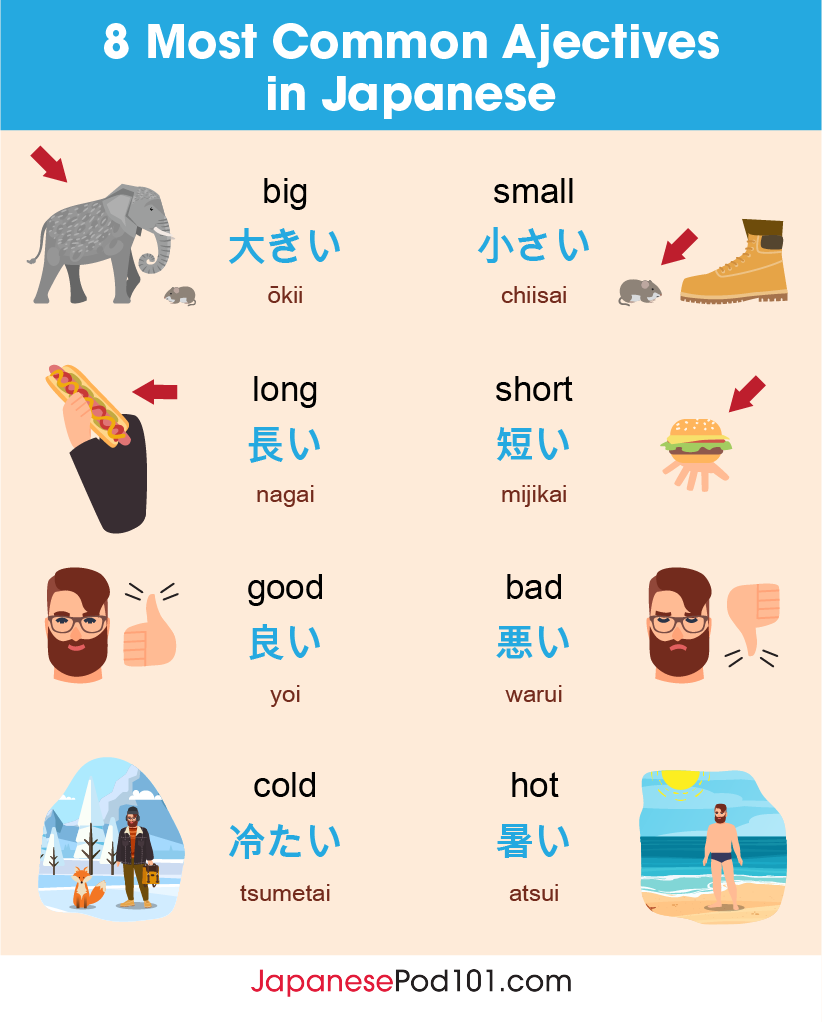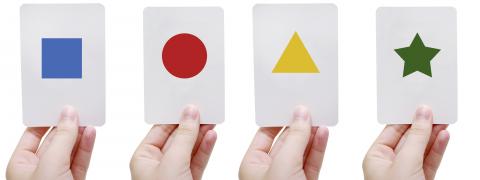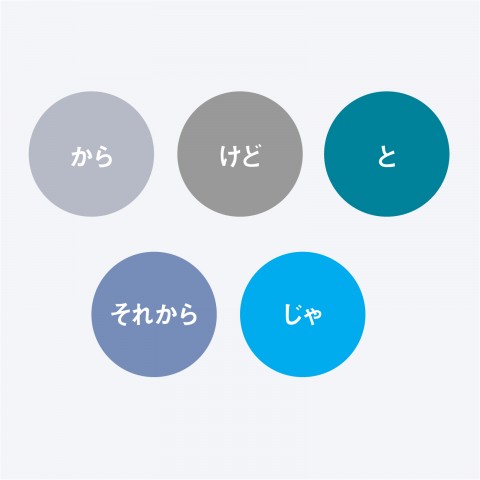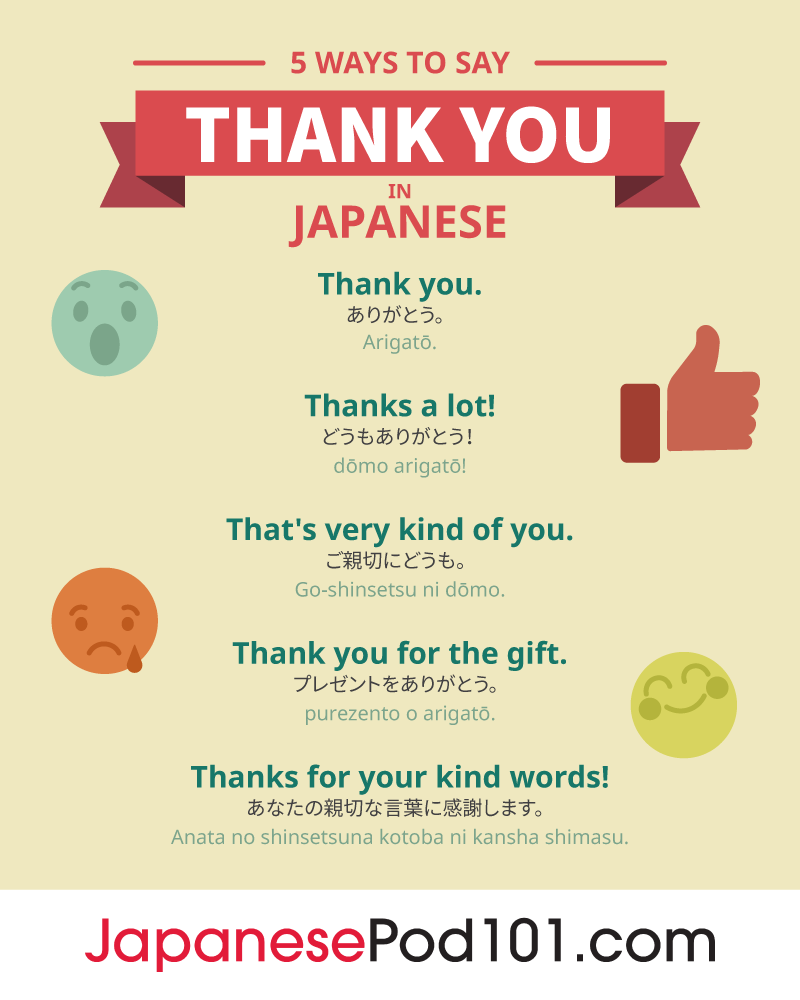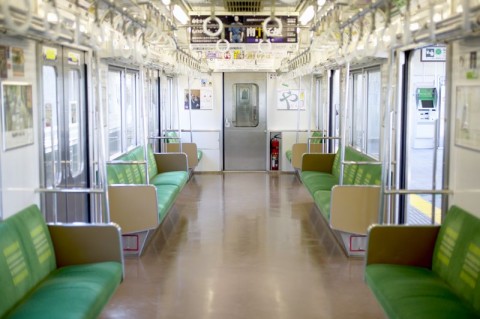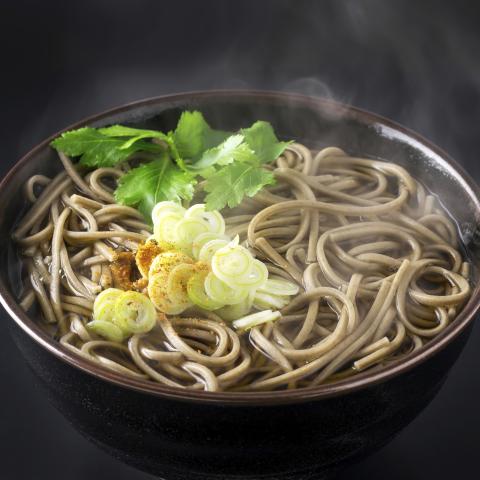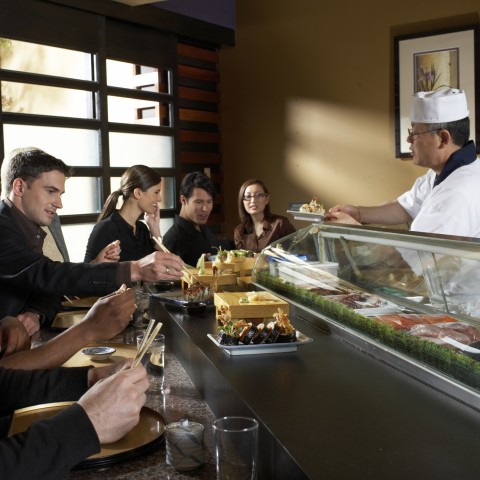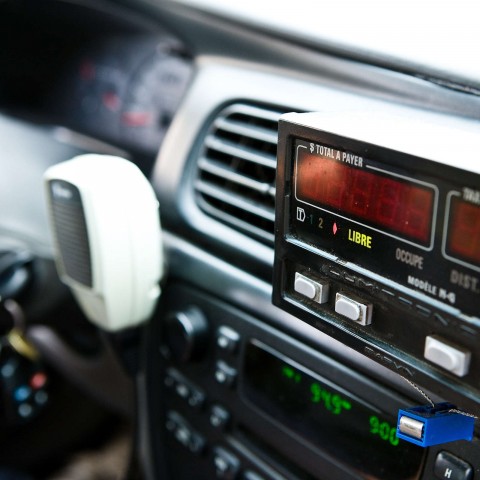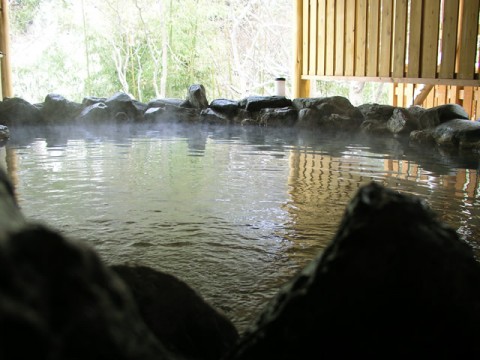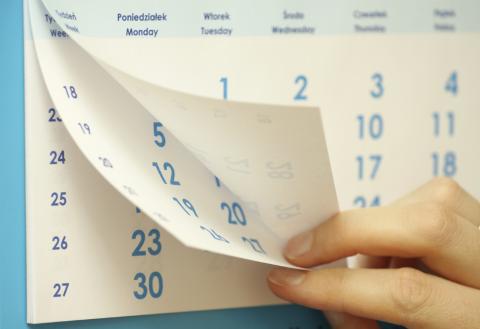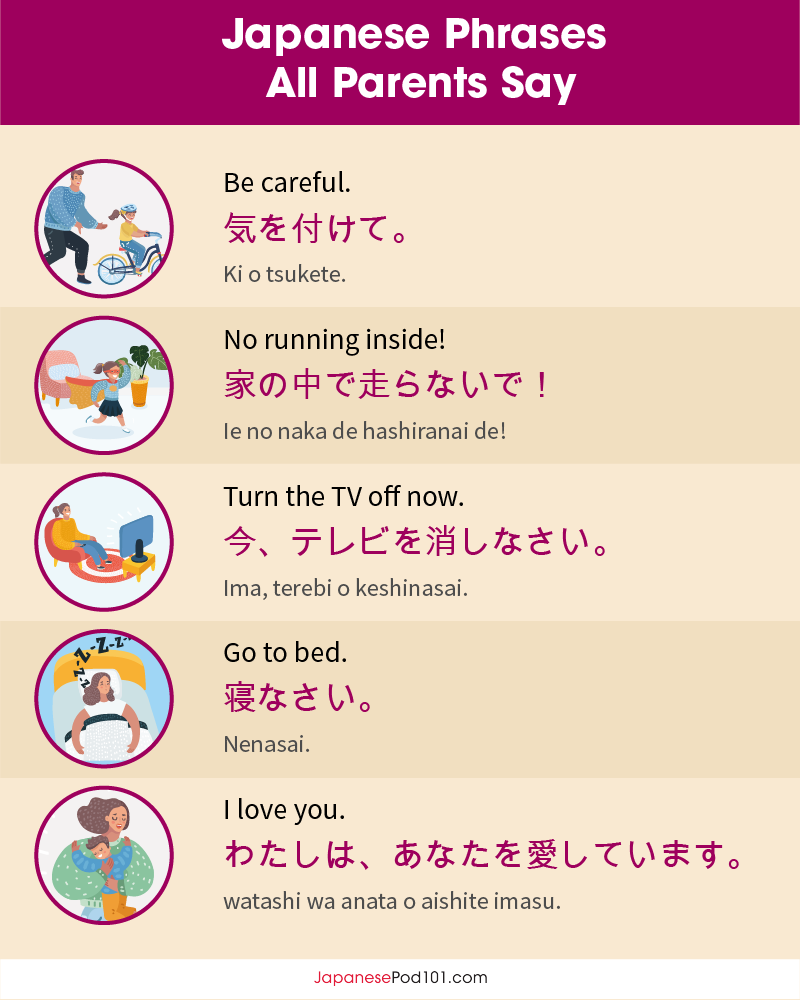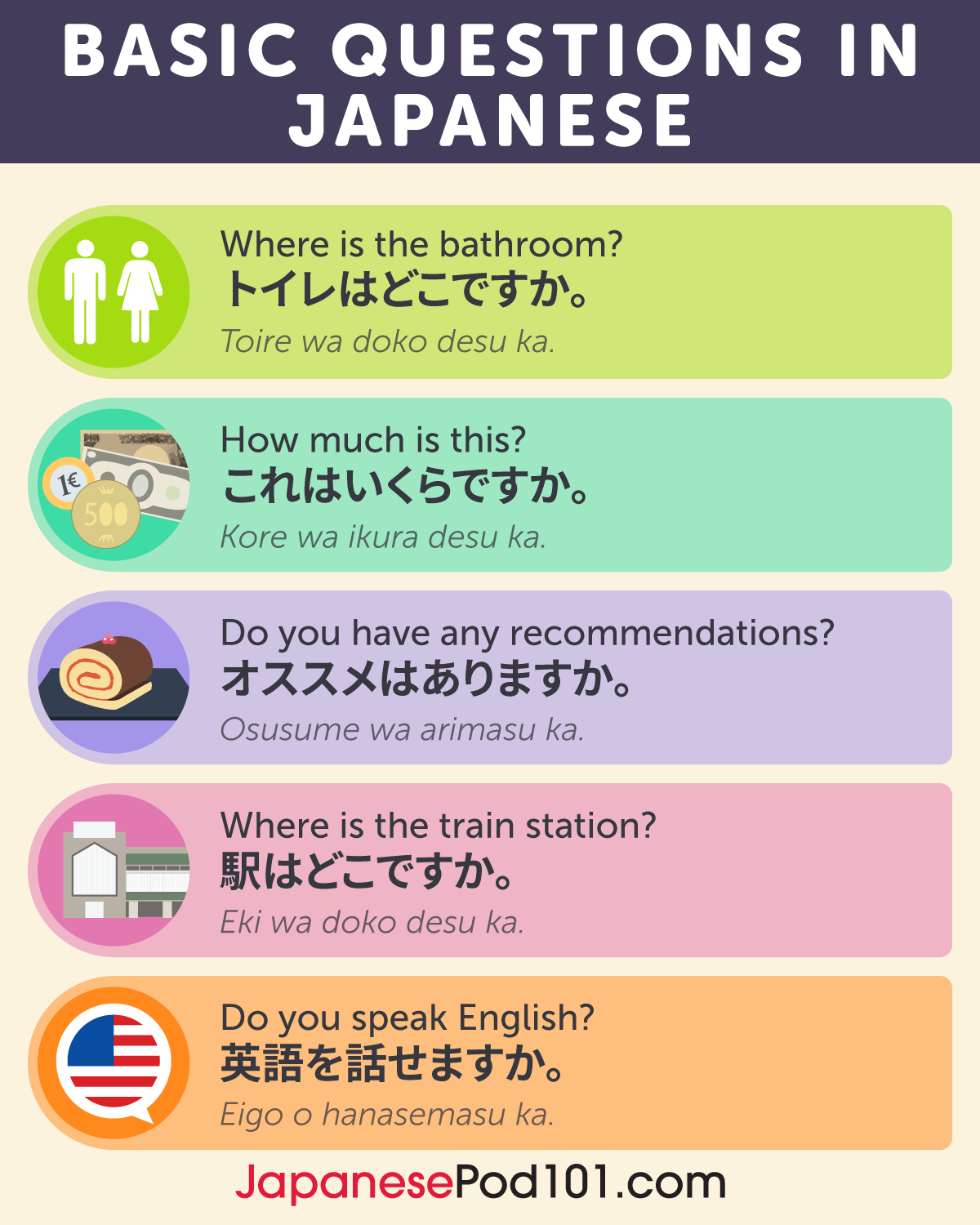Do you realize how many adjectives you use when you describe or express something, such as feeling, personality, weather conditions, and the size and color of things? Adjectives in Japanese are various and rich in expression, so learning the top 100 Japanese adjectives will greatly improve your conversation skills in Japanese!
It’s not very difficult to learn Japanese adjectives rules, as they work in mostly the same way as they do in English grammar. Before we move onto our list, though, it’s prudent to go over Japanese adjectives rules to give you context.
So first things first: Where do Japanese adjectives go?
For example, a Japanese adjective is placed before a noun: 親切な人 (shinsetsu na hito), meaning “kind person.” Or they can follow the noun + be verb + adjective pattern: 外は寒い (soto wa samui), meaning “outside is cold.”
Most Japanese adjectives end with the sound of either Hiragana い (i) or な (na), unless it’s not in past form. An adjective consists of a stem, such as 親切 (shinsetsu), which never changes, and a suffix, such as な (na), which can change.
Ready to expand your Japanese adjectives vocabulary? You’ll enjoy speaking Japanese a lot more once you know the variety of Japanese adjectives! Here’s our top 100 Japanese adjectives list at JapanesePod101.com!

Table of Contents
- Describing Dimension, Size, Distance & Number
- Describing Value
- Describing Sense
- Japanese Adjectives for Personality & Feelings
- Describing Speed, Difficulty, Importance, etc.
- Describing Colors
- Describing Shapes
- Describing Weather
- Japanese Adjectives for Food: Describing Taste
- Describing Situations
- Describing Physical Traits or Physical Conditions
- Describing Appearance and Condition
- Conclusion: How JapanesePod101 Can Help You Learn More Japanese
1. Describing Dimension, Size, Distance & Number
1- Vocabulary
| Reading | Kanji | Hiragana | English | |
|---|---|---|---|---|
| 1 | ōkii | 大きい | おおきい | big |
| 2 | chiisai | 小さい | ちいさい | small |
| 3 | hiroi | 広い | ひろい | wide |
| 4 | semai | 狭い | せまい | narrow |
| 5 | takai | 高い | たかい | tall |
| 6 | hikui | 低い | ひくい | short; low |
| 7 | omoi | 重い | おもい | heavy |
| 8 | karui | 軽い | かるい | light |
| 9 | chikai | 近い | ちかい | close |
| 10 | tōi | 遠い | とおい | far |
| 11 | ōi | 多い | おおい | many |
| 12 | sukunai | 少ない | すくない | few |
2- Example Sentences
- 部屋に大きいベッドと小さい椅子があります。
Heya ni ōkii beddo to chiisai isu ga arimasu.
There is a big bed and a small chair in the room. - このカバンは重いです。
Kono kaban wa omoi desu.
This bag is heavy. - 駅はここから遠いです。
Eki wa koko kara tōi desu.
The station is far from here. - あそこに高いビルがあります。
Asoko ni takai biru ga arimasu.
There is a tall building there.
2. Describing Value
1- Vocabulary
| Reading | Kanji | Hiragana | English | |
|---|---|---|---|---|
| 13 | yoi | 良い | よい | good |
| 14 | warui | 悪い | わるい | bad |
| 15 | subarashii | 素晴らしい | すばらしい | great |
| 16 | hidoi | ひどい | ひどい | awful; terrible |
| 17 | utsukushii | 美しい | うつくしい | beautiful |
| 18 | minikui | 醜い | みにくい | ugly |
| 19 | kōka na | 高価な | こうかな | expensive |
| 20 | yasui | 安い | やすい | cheap |
2- Example Sentences
- 私はテストで良い結果を出した。
Watashi wa tesuto de yoi kekka wo dashita.
I got a good result on the test. - そこから素晴らしい眺めが見えます。
Soko kara subarashii nagame ga miemasu.
You can see a great view from there. - あの女性はとても美しいです。
Ano josei wa totemo utsukushii desu.
That lady is very beautiful. - この安いカメラはすぐに壊れました。
Kono yasui kamera wa sugu ni kowaremashita.
This cheap camera broke instantly.
3. Describing Sense
1- Vocabulary
| Reading | Kanji | Hiragana | English | |
|---|---|---|---|---|
| 21 | yawarakai | 柔らかい | やわらかい | soft |
| 22 | katai | 硬い・固い | かたい | hard |
| 23 | tsuyoi | 強い | つよい | strong |
| 24 | yowai | 弱い | よわい | weak |
| 25 | nameraka na | 滑らかな | なめらかな | smooth |
| 26 | arai | 荒い | あらい | rough |
| 27 | fukuzatsu na | 複雑な | ふくざつな | complicated |
| Reading | Kanji | Hiragana | English | |
|---|---|---|---|---|
| 28 | omoshiroi | 面白い | おもしろい | funny; interesting |
| 29 | shitashimiyasui | 親しみやすい | したしみやすい | friendly |
| 30 | otonashii | 大人しい | おとなしい | quiet |
| 31 | ganko na | 頑固な | がんこな | stubborn |
| 32 | yasashii | 優しい | やさしい | amiable; thoughtful |
| 33 | ureshii | 嬉しい | うれしい | happy |
| 34 | kanashii | 悲しい | かなしい | sad |
| 35 | shakōteki na | 社交的な | しゃこうてきな | sociable |
| 36 | kodoku na | 孤独な | こどくな | lonely |
| 37 | okotta | 怒った | おこった | angry |
Also visit “Which Adjective Describes Your Personality Best?” to check Japanese pronunciation, and see some more related vocabulary.
2- Example Sentences
- 彼女は頑固な人です。
Kanojo wa ganko na hito desu.
She is a stubborn person. - 私は面白い人が大好きです。
Watashi wa omoshiroi hito ga daisuki desu.
I really like a funny person. - 試験に合格したので嬉しいです。
Shiken ni gōkaku shita node ureshii desu.
I am happy because I passed the exam. - 彼は社交的な学生です。
Kare wa shakōteki na gakusei desu.
He is a sociable student.
To learn more about Personalities and Feelings, please read this article.
5. Describing Speed, Difficulty, Importance, etc.
1- Vocabulary
| Reading | Kanji | Hiragana | English | |
|---|---|---|---|---|
| 38 | hayai | 速い | はやい | fast |
| 39 | osoi | 遅い | おそい | slow |
| 40 | kantan na | 簡単な | かんたんな | easy |
| 41 | muzukashii | 難しい | むずかしい | difficult |
| 42 | jyūyō na | 重要な | じゅうような | important |
| 43 | atarashii | 新しい | あたらしい | new |
| 44 | furui | 古い | ふるい | old |
| 45 | majime na | 真面目な | まじめな | serious |
2- Example Sentences
- インターネットが遅いのでビデオ電話ができません。
Intānetto ga osoi node bideo-denwa ga dekimasen.
I can’t make a video-call because the internet is slow. - これは簡単な問題です。
Kore wa kantan na mondai desu.
This is an easy problem. - 私は新しい携帯電話が欲しいです。
Watashi wa atarashii keitai denwa ga hoshii desu.
I want a new mobile phone. - 彼は真面目な会議で笑い出しました。
Kare wa majime na kaigi de waraidashimashita.
He started laughing at a serious meeting.
6. Describing Colors
1- Vocabulary
“Color” is iro in Japanese.
| Reading | Kanji | Hiragana | English | |
|---|---|---|---|---|
| 46 | akai | 赤い | あかい | red |
| 47 | aoi | 青い | あおい | blue |
| 48 | midori no | 緑の | みどりの | green |
| 49 | kiiroi | 黄色い | きいろい | yellow |
| 50 | kuroi | 黒い | くろい | black |
| 51 | shiroi | 白い | しろい | white |
| 52 | kurai | 暗い | くらい | dark |
| 53 | akarui | 明るい | あかるい | light; bright |
| 54 | azayaka na | 鮮やかな | あざやかな | vivid |
| 55 | bon’yari shita | − | ぼんやりした | dull |
2- Example Sentences
- りんごは赤い種類と緑の種類があります。
Ringo wa akai shurui to midori no shurui ga arimasu.
Apples have a red kind and a green kind. - 白いライオンを見たことがありますか。
Shiroi raion o mita koto ga arimasu ka.
Have you seen white lions? - 私は暗い色の服が好きです。
Watashi wa kurai iro no fuku ga suki desu.
I like clothes with dark colors. - その浴衣は鮮やかな色が特徴です。
Sono yukata wa azayaka na iro ga tokuchō desu.
That Yukata is characterized by vivid colors.
7. Describing Shapes
1- Vocabulary
“Shape” is katachi in Japanese.
| Reading | Kanji | Hiragana | English | |
|---|---|---|---|---|
| 56 | marui | 丸い・円い | まるい | round |
| 57 | shikakui | 四角い | しかくい | square |
| 58 | sankaku no | 三角の | さんかくの | triangular |
| 59 | chōhōkei no | 長方形の | ちょうほうけいの | rectangular |
| 60 | kyūtai no | 球体の | きゅうたいの | spherical |
| 61 | rippōtai no | 立方体の | りっぽうたいの | cubic |
2- Example Sentences
- その丸い鏡を見てください。
Sono marui kagami o mite kudasai.
Please look at the round mirror. - ゴミはあの四角い箱に入れてください。
Gomi wa ano shikakui hako ni irete kudasai.
Please put trash in that square garbage bin. - 地球は球体の形をしています。
Chikyū wa kyūtai no katachi o shite imasu.
The earth has a spherical shape. - この建築は立方体の形が有名です。
Kono kenchiku wa rippōtai no katachi ga yūmei desu.
This architecture is famous for its cubic shape.
8. Describing Weather
1- Vocabulary
| Reading | Kanji | Hiragana | English | |
|---|---|---|---|---|
| 62 | atsui | 暑い | あつい | hot |
| 63 | samui | 寒い | さむい | cold |
| 64 | mushimushi shita | 蒸し蒸しした | むしむしした | humid |
| 65 | atatakai | 暖かい | あたたかい | warm |
| 66 | hadazamui | 肌寒い | はだざむい | chilly |
Also, check out our lesson Learn the Top 15 Weather Conditions to learn how to express even more weather conditions in Japanese.
2- Example Sentences
- 今日は寒いので手袋を持って行ってください。
Kyō wa samui node tebukuro o motte itte kudasai.
Please take gloves with you because today is cold. - 夏は30度を超える暑い日が続きます。
Natsu wa 30-do o koeru atsui hi ga tsuzukimasu.
Hot days with over 30 degrees continue in summer. - 春は暖かい気候で花見ができます。
Haru wa atatakai kikō de hanami ga dekimasu.
Spring has a warm climate, and flowers bloom. - 昨日は肌寒い日でした。
Kinō wa hadazamui hi deshita.
Yesterday was chilly.
To learn more about weather, please visit our article all about Japanese Weather.
9. Japanese Adjectives for Food: Describing Taste
Here are the most common and important Japanese adjectives for describing food and taste!
1- Vocabulary
| Reading | Kanji | Hiragana | English | |
|---|---|---|---|---|
| 67 | amai | 甘い | あまい | sweet |
| 68 | shiokarai | 塩辛い | しおからい | salty |
| 69 | suppai | 酸っぱい | すっぱい | sour |
| 70 | nigai | 苦い | にがい | bitter |
| 71 | karai | 辛い | からい | spicy; hot |
| 72 | oishii | 美味しい | おいしい | delicious; tasty |
| 73 | mazui | 不味い | まずい | tastes bad |
2- Example Sentences
- 私は甘いものが大好きです。
Watashi wa amai mono ga daisuki desu.
I like sweets very much. - この梅干しは塩辛いので食べられません。
Kono umeboshi wa shiokarai node taberaremasen.
I can’t eat this Umeboshi because it’s salty. - 彼は苦いコーヒーが好きです。
Kare wa nigai kōhī ga suki desu.
He likes bitter coffee. - 明日は記念日なので美味しいものを食べたい。
Ashita wa kinenbi na node oishii mono o tabetai.
I want to eat something delicious because tomorrow is an anniversary.
10. Describing Situations
1- Vocabulary
| Reading | Kanji | Hiragana | English | |
|---|---|---|---|---|
| 74 | tanoshii | 楽しい | たのしい | fun |
| 75 | tsumaranai | − | つまらない | boring |
| 76 | anzen na | 安全な | あんぜんな | safe; secure |
| 77 | kiken na | 危険な | きけんな | dangerous |
| 78 | kinkyū no | 緊急の | きんきゅうの | urgent |
| 79 | ochitsuita | 落ち着いた | おちついた | calm |
| 80 | tadashii | 正しい | ただしい | correct; right |
| 81 | ayamatta | 誤った | あやまった | wrong |
2- Example Sentences
- これは安全な調理器具です。
Kore wa anzen na chōri kigu desu.
This is safe cooking equipment. - 私はつまらない映画で寝落ちしました。
Watashi wa tsumaranai eiga de neochi shimashita.
I fell asleep during the boring movie. - 彼は危険な橋を渡りました。
Kare wa kiken na hashi o watarimashita.
He crossed a dangerous bridge. - いつも正しい行いをしなさい。
Itsumo tadashii okonai o shinasai.
Always do the right things.
11. Describing Physical Traits or Physical Conditions
1- Vocabulary
| Reading | Kanji | Hiragana | English | |
|---|---|---|---|---|
| 82 | wakai | 若い | わかい | young |
| 83 | toshioita | 年老いた | としおいた | old |
| 84 | genki na | 元気な | げんきな | lively |
| 85 | byōki no | 病気の | びょうきの | sick |
| 86 | kirei na | 綺麗な | きれいな | clean; beautiful |
| 87 | kitanai | 汚い | きたない | dirty |
| 88 | suteki na | 素敵な | すてきな | nice |
| 89 | hen na | 変な | へんな | strange; odd |
| 90 | seijō na | 正常な | せいじょうな | normal |
| 91 | ijō na | 異常な | いじょうな | abnormal |
2- Example Sentences
- 「若い時の苦労は買ってでもせよ」ということわざがある。
“Wakai toki no kurō wa katte demo seyo” to iu kotowaza ga aru.
There is a proverb saying “Heavy work in youth is quiet in old age.” - 彼女の部屋はいつも綺麗です。
Kanojo no heya wa itsumo kirei desu.
Her room is always clean. - あの女性は素敵な靴を履いています。
Ano josei wa suteki na kutsu o haite imasu.
That lady wears nice shoes. - 異常な症状が出たらすぐに電話してください。
Ijō na shōjō ga detara sugu ni denwa shite kudasai.
If abnormal symptoms appear, please call me immediately.
12. Describing Appearance and Condition
1- Vocabulary
| Reading | Kanji | Hiragana | English | |
|---|---|---|---|---|
| 92 | kawaii | 可愛い | かわいい | pretty; cute |
| 93 | kichin to shita | − | きちんとした | neat |
| 94 | miryokuteki na | 魅力的な | みりょくてきな | attractive |
| 95 | miryoku no nai | 魅力のない | みりょくのない | unattractive |
| 96 | futotta | 太った | ふとった | fat |
| 97 | yaseta | 痩せた | やせた | lean; thin |
| 98 | okanemochi na | お金持ちな | おかねもちな | rich |
| 99 | mazushii | 貧しい | まずしい | poor |
| 100 | heikinteki na | 平均的な | へいきんてきな | average |
2- Example Sentences
- 彼女はいつもきちんとした服を着ています。
Kanojo wa itsumo kichin to shita fuku o kite imasu.
She always wears neat clothes. - 私は平均的な家出身です。
Watashi wa heikinteki na ie shusshin desu.
I am from an average family. - 貧しい子供達のために募金をしてください。
Mazushii kodomo-tachi no tame ni bokin o shite kudasai.
Please donate for poor children.
13. Conclusion: How JapanesePod101 Can Help You Learn More Japanese
In this Japanese adjectives lesson, we introduced the top 100 Japanese adjectives with examples. We hope this article is helpful for you, and has given you more footing to improve your Japanese vocabulary! Do you feel prepared to describe your personality and feelings?
If you would like to learn more about the Japanese language, you’ll find a lot more useful content on JapanesePod101.com. We provide a variety of free lessons for you to improve your Japanese language skills. For more Japanese adjectives practice, Most Common Adjectives and Words and Phrases to Help You Describe Your Feelings are useful to help you learn pronunciation with audio. Further, Top 15 Questions You Should Know for Conversations and Top 10 Conversational Phrases are essential for your conversation practice.
Know that your hard work will pay off; with enough practice, you’ll be speaking like a native in no time with JapanesePod101.com!

Japanese Netflix Programs: Learn Japanese with Netflix
It’s wonderful if you can learn Japanese and have entertainment at the same time. Yes, it is possible with online streaming services! One of the most famous and popular is Netflix, which nowadays offers a wide range of Japanese shows and movies. A lot of Japanese movies on Netflix are available with subtitles in both Japanese and English, so it’s ideal to learn by listening to actual pronunciation, reading what words mean, and/or checking vocabulary and spelling. In terms of understanding Japanese culture, Netflix can also be a great source for this.
When it comes to learning and entertainment, watching Japanese shows on Netflix is much easier and useful than watching them on TV or at actual movie theaters. Watching Japanese shows on Netflix doesn’t require traveling to theaters, you don’t need to bother checking schedules, and you don’t need to remember to record. Most of all, you can repeat lines at any time, and as many times as you like, with subtitles so that you can learn Japanese more efficiently.
Whether you just want to enjoy watching Japanese movies on Netflix casually, or you want to try learning conversational Japanese, Netflix is one of the best options for you. Either way, watching Netflix Japanese shows will boost your Japanese skills and allow you to see Japanese culture in action.
So what’s on Japanese Netflix? Here’s JapanesePod101’s list of recommended Japanese Netflix titles for an enjoyable Japanese learning experience!

Table of Contents
- Midnight Dining / 深夜食堂 (Shin’ya Shokudō)
- Hibana: Spark / 火花
- Terrace House / テラスハウス
- Ainori Love Wagon / あいのり
- Atelier / アンダーウェア
- Solitary Gourmet / 孤独のグルメ
- Kantaro: The Sweet Tooth Salaryman / さぼリーマン甘太朗
- Million Yen Women / 100万円の女たち
- Dad of Light / ファイナルファンタジーXIV 光のお父さん
- Jiro Dreams of Sushi / 二郎は鮨の夢を見る
- Conclusion: How JapanesePod101 Can Help You Learn More Japanese
1. Midnight Dining / 深夜食堂 (Shin’ya Shokudō)
Midnight Diner is a Japanese TV series, based on the manga of the same title: 深夜食堂 (Shin’ya Shokudō). This Japanese show is currently one of the best Japanese Netflix shows. This drama is mainly about a diner which operates at midnight, and follows the owner’s interactions with his customers.
The setting of the show is a small Izakaya named “Meshiya” in Shinjuku, the big city that never sleeps in Tokyo. As Shinjuku is busy with its nightlife, there are always customers who visit this midnight diner (open from midnight to seven o’clock in the morning). Customers come to the diner for delicious traditional Japanese food and relaxing conversation with the master chef after their stressful day. What’s interesting is that each customer has a unique and touching story.
You’ll learn about how Japanese people talk about their lives, dreams, and love lives, and get a taste of Japanese traditional night foods and drinks. When it comes to the language they use, it may be a bit difficult for beginners, as the characters speak in a very casual style (sometimes with slang), which is far from using the structured formal language. However, this can be useful learning material for grasping colloquial Japanese.
You’ll probably hear Japanese curse words in some episodes, but here’s a tip for you: Japanese Curse Words You Should Never Use.
2. Hibana: Spark / 火花
Hibana, the Japanese word meaning “spark,” is a Japanese Netflix show based on the award-winning novel written by a Japanese comedian. Inspired in part by the author’s real life, the story is about two young manzai comedians and their struggles as they try to become big stand-up comedians. This show has ten episodes, and each episode focuses on one year of their lives, totaling a span of ten years.
This Japanese Netflix show attracts viewers’ attention and draws them into the story as it depicts human drama with stark reality, both heartwarming and heart-wrenching. The drama is well-filmed to show human relationships and the reality of competitiveness in the comedy industry.
For Japanese learners, it’s useful to know how people use conversational Japanese around close friends, seniors, and juniors, using both the formal and informal language. For this reason, we recommend this show for intermediate-level Japanese learners. This show also gives insight into the culture and industry of Japanese comedy.
Many Japanese comedians are from the Kansai area, and they speak Kansai dialect. For more information on this topic, check out our Japanese Dialects guide!
3. Terrace House / テラスハウス
This Netflix Japanese show is based on the reality TV show that aired on Japanese Fuji TV with five series, and now they’ve made a Netflix original series. This reality show follows the lives of young Japanese strangers—three girls and three guys—living together in one posh house. Viewers get to see how different people get to know each other and form human relationships (and sometimes romance) over time.
This show doesn’t have a particular story, nor dramatic turn of events. However, this is a good way to know how the younger Japanese generations interact with each other in everyday life. Although they share their lives under one roof, each member still engages in their own work or study outside the house, and they’re free to enter and leave. This setting makes the show more realistic and interesting.
If you want to make new Japanese friends and speak natural Japanese (which normal textbooks don’t teach), this can be the ideal show to watch. You can learn how to speak when you’re getting to know someone new, and how to start conversations.
This Japanese Netflix show is recommended for Japanese learners at the intermediate level. The conversations are mostly informal and spoken among young people, without structured or formal language.
4. Ainori Love Wagon / あいのり
This Japanese show on Netflix is originally from the popular Japanese TV program which was first aired two decades ago. The Japanese word Ainori means “ride together,” and can also mean “love ride,” based on how it’s read. This reality show follows seven young, single Japanese participants who go on a road trip to foreign countries in a pink van. The goal of participants is to find real love and become a couple with another participant while on the budget-type trip. They’ll then finish traveling and return to Japan together.
Ainori is an interesting love reality show which also introduces foreign countries and cultures during the participants’ travels. Each participant has a unique personality, and as you keep watching, you may find some favorite characters whom you want to support and see them happily form a couple. Unlike Terrace House, which features fancy people and a posh house, Ainori has more events, adventure, and drama as the participants travel to foreign lands.
We recommend this show for intermediate Japanese learners. Similarly to Terrace House, conversations are informal, without structured or formal language. It’s good for learning how young Japanese people talk and communicate with each other.
If you want to learn more about love phrases, check out Romance and Love in Japanese here!
5. Atelier / アンダーウェア
Atelier (the title of the original Japanese version is アンダーウェア meaning “Underwear” ) is a Netflix Japanese drama produced by Fuji TV for Netflix. It has thirteen episodes, and the real and famous lingerie company sponsors and supports this drama, making it more realistic in detail.
This show centers on a girl who has started her career at a high-end lingerie company and struggles to do well there. Through all the happenings, the story focuses on her interactions and relationship with her boss and the owner of the company. The character settings remind viewers of Anna Wintour and Miranda Priestly.
This Japanese Netflix drama provides viewers with a chance to learn some business conversation in Japanese for the office setting, and gives viewers insight into the daily life of a young employee. It’s good for intermediate-level learners.
6. Solitary Gourmet / 孤独のグルメ
Looking for good Japanese Netflix shows about food?
Solitary Gourmet is based on the original Japanese comic of the same name, and it has been produced as a Japanese TV drama series. It’s now available on Netflix.
This show is about nothing but Japanese cuisine, and it’s great for Japanese food lovers. The story follows a Japanese salesman who travels to different places across Japan for business, and visits various restaurants. He has a great passion for food, and he feels ultimate happiness when he indulges in eating delicious food.
It may sound boring, as it’s about a businessman eating alone, but this show actually offers something more and can be very addictive. In each episode, the main character tries out new restaurants and bars, and he enjoys every detail of speciality food. It’s intriguing how he tastes food and describes it to himself (in his head) in detail.
This is recommended for Japanese food fans and those who are interested in the Japanese food culture. You’ll learn a lot more about Japanese cuisine than just sushi and ramen. Also, watching this show is a great way to improve your vocabulary, especially in terms of adjectives.
7. Kantaro: The Sweet Tooth Salaryman / さぼリーマン甘太朗
This is another one of the top Japanese Netflix shows which is based on the manga comics featuring food, but this one is about sweets. What’s interesting and attractive about this series is that the featured cafes, patisserie, and sweets and desserts are real, although the story itself is fiction.
The story of this Japanese Netflix series centers on a salaryman, Kantaro, who is considered a go‐getter and hardworking businessman. However, his seemingly fast and efficient work is actually motivated by his endless passion for sweets and desserts. He manages his work in such a way that he can sneak out to eat sweets in various places across Tokyo. Each episode focuses on a particular kind of sweet.
This show is good for Japanese learners, especially those who love sweets. If you live in Tokyo or have a chance to visit Tokyo, you can actually try the sweets featured in this show! If that’s possible, try to learn what Kantaro says to describe sweets; you’ll be able to practice those phrases while tasting yummy sweets. This show also offers a great chance to learn formal business Japanese.
8. Million Yen Women / 100万円の女たち
This Japanese show on Netflix is also based on a manga, and the series was co-produced by TV Tokyo and Netflix into a live-action drama.
This mysterious plot features a young novelist, and five beautiful women who suddenly moved in with him to pay him a crazy one-million yen per month to help his living. Each of the five women has unique characteristics and background stories, making the story more attractive.
He wonders why these women came to his place to offer him such crazy help, but it’s forbidden to ask them questions. However, through living with them, a small piece of the mystery is revealed little by little in each episode.
This is one of the most fascinating Japanese Netflix programs today. This show is very amusing as the story is shrouded in curious mystery and viewers are pulled into its unique world to discover the secret. You can simply enjoy watching it, but it can also be good material to learn conversational Japanese. It’s recommended for beginner- and intermediate-level learners.
9. Dad of Light / ファイナルファンタジーXIV 光のお父さん
This was originally a TV drama based on a true story from a blog, and is the first live-action series to commercialize the game Final Fantasy XIV.
The story focuses on a father and his son as they reconnect by playing the online role-playing game Final Fantasy XIV. The son, who feels distant from his father after years of little conversation, tries to break the ice. He remembered that he and his father played Final Fantasy III together when he was a kid, and they had a good bond through the game. He hopes that this passion for FFXIV will help them reconnect and he plans to become friends with his father in the online game without telling him who he really is. Over time, through playing and working together in-game, he tries to understand and communicate with his father better.
This Japanese Netflix TV series would be very interesting for gamers, particularly those who already have some knowledge about Final Fantasy. This show features a lot of game-related vocabulary, and is recommended for beginner- and intermediate-level learners.
10. Jiro Dreams of Sushi / 二郎は鮨の夢を見る
If you couldn’t tell, Japanese Netflix TV shows about food are quite popular. This one also features food, but is different from the others on this list because it’s a documentary film. The film was directed by David Gelb, and the documentary focuses on Jiro Ono (小野 二郎 Ono Jirō), who is an eighty-five-year-old sushi master.
The film features the legendary Jiro’s renowned restaurant Sukiyabashi Jiro which has three Michelin stars. His restaurant, located in the middle of Ginza, one of the most expensive districts in Tokyo, has merely ten seats, but the minimum price per person is from ¥30,000. The documentary also focuses on Jiro’s relationship with his two sons, both of whom are also sushi chefs (and one of them is his eventual heir).
This documentary gives insight into the ultimate Japanese craftsmanship and pursuit in the art of food. The Japanese spoken in this film isn’t a perfect tool for learning, but it still helps you to deepen your knowledge of Japanese.
11. Conclusion: How JapanesePod101 Can Help You Learn More Japanese
I hope this Japanese Netflix list of the best shows on Netflix to learn Japanese is helpful, and that it makes your Japanese studies more enjoyable! By now, you should have a better idea of how to use Japanese Netflix content to make learning fun and efficient.
Ready to watch Japanese Netflix? Which of these Japanese Netflix programs are you most interested in? Let us know!
If you would like to learn more about the Japanese language, you’ll find more useful content on JapanesePod101.com. We provide a variety of free lessons for you to improve your Japanese language skills. For example, Top 15 Questions You Should Know for Conversations to practice your Japanese with audio. If you’re a fan of Japanese anime, How to Learn Japanese with Anime? and 76 Must-Know Japanese Onomatopoeia Words are helpful. If you’re planning to visit Japan, check out 3 Reasons to Learn Japanese Before Traveling!
Know that your hard work will pay off; with enough practice, you’ll be speaking like a native in no time!

Japanese Conjunctions: Learn Japanese Linking Words
If you’re learning Japanese grammar, you may be surprised by how many variations there are of Japanese conjunctions and Japanese connective particles, and how they vary depending on the use of sentences.
When you think about speaking your mother tongue, the flow of your sentences is very natural, without redundancy or lack of words. This is because you can use conjunctions effectively and naturally to connect sentences.
In this way, in Japanese grammar, conjunctions are one of the most essential parts of speech. When you master Japanese conjunctions, you’ll be able to speak Japanese quite fluently!
By the end of this article, you should have a better idea about Japanese conjunctions meaning, how to use Japanese conjunctions, and have an increased Japanese conjunction vocabulary!
Here are some of the most basic and useful Japanese conjunctions and connectives. Let’s enjoy learning here at JapanesePod101.com!

Table of Contents
- What is a Conjunction?
- Conjunctions to Correlate Similar Thoughts
- Conjunctions to Express Condition
- Conjunctions to Express Cause
- Conjunctions to Express Opposition
- Conjunctions to Express Choices
- Other Useful Japanese Conjunctions
- Conclusion: How JapanesePod101 Can Help You Learn More Japanese
1. What is a Conjunction?
Conjunctions are words that connect and conjoin phrases, clauses, or sentences together. A conjunction word doesn’t have a meaning itself, much like prepositions. Conjunctions in Japanese function similarly to how they do in English.
The conjunction in Japanese is usually a particle or postposition that’s usually used at the end of the dependent clause(s), determining the relationship of the conjoined clauses. Examples of these relationships include copulative, disjunctive, adversative, and conclusive.
For example, here are the most common Japanese conjunctions by type:
- Copulative Conjunctions: The conjunctive relation of units that expresses the addition and/or connection of meanings.
And:
と、(to)
や、 (ya)
そして (soshite)Also:
も、(mo)
もまた (mo mata)Then:
そして、 (soshite)
それから (sorekara)Or:
または、(mata wa)
また (mata) - Disjunctive Conjunctions: The conjunctive relation of units that expresses the disjunction of their meanings.
-or, -or : -ka, -ka ‥か、‥か
-and, -and : -ya, -ya ‥や、‥や - Adversative Conjunctions: The conjunctive relation of units that expresses the opposition of their meanings.
But:
しかし、(shikashi)
が、(ga)
けど (kedo)
けれども (keredomo)
なのに (nanoni)
でも (demo)However:
しかしながら、 (shikashinagara)
ところが (tokoroga)
Despite:
にもかかわらず (nimokakawarazu) - Conclusive Conjunctions
So:
それで、(sorede)
なので (nanode)And then:
それから、(sorekara)
その後 (sonogo)Therefore:
それゆえに、(soreyue ni)
だから、(dakara)
したがって (shitagatte)Thus:
ゆえに、(yue ni)
したがって (shitagatte)
There are exceptions where Japanese language conjunctions can’t be used to connect equivalent clauses or sentences. However, we’ll explain the basic and most important Japanese conjunctions in this article.
Japanese conjunctions have a wide range of variations
2. Conjunctions to Correlate Similar Thoughts
Here are the commonly used Japanese conjunctions which connect clauses/sentences with a function of addition.
1- と (to)
- Meaning: This word means “and.” It simply adds one thing to another.
- Usage:と(to) is used when you list everything that’s applicable. と (to) can only be used to connect nouns.
- Example:
テーブルの上にりんごとみかんとバナナがあります。
Tēburu no ue ni ringo to mikan to banana ga arimasu.
There are apples, oranges, and bananas on the table.- In this case, there are only apples, oranges, and bananas on the table.
2- や (ya)
- Meaning: This word means “and.” It adds one thing to another.
- Usage: や (ya) is similar to と (to), but it’s used when you list only some parts of a whole, which are applicable. や (ya) can only be used to connect nouns.
- Example:
テーブルの上にりんごやみかんがあります。
Tēburu no ue ni ringo ya mikan ga arimasu.
There are apples and oranges on the table.- The translation in English is the same as that for the example for と (to). In this case, however, it implies that there are things besides the apple and orange on the table.
3- そして (soshite)
- Meaning: This word means “and.” It adds things to each other, like the last words. It can also mean “thus” and “and then.”
- Usage: そして (soshite) is used to add noun(s), or to explain an action that follows.
- Example:
テーブルの上にりんごとみかん、そしてバナナがあります。
Tēburu no ue ni ringo to mikan, soshite banana ga arimasu.
There are apples, oranges, and bananas on the table.私はりんごを食べます。そしてみかんも食べます。
Watashi wa ringo o tabemasu. Soshite mikan mo tabemasu.
I’ll eat an apple. And then I’ll eat an orange, too.
3. Conjunctions to Express Condition
There are several variations of Japanese conjunctions which are used to introduce a conditional clause.
1- もし (moshi)
- Meaning: It means simply “if,” but it can also mean “in case” and “supposing.”
- Usage: When using もし (moshi), the end of a sentence should be conjugated to the conditional form, such as: たら (-tara), なら (-nara), ならば (-naraba), or すると (-suruto).
When the conditional form is emphasized, it’s possible to omit もし (moshi) and the sentence still keeps the expression of condition.
- Example:
もし明日雨が降るなら、ピクニックは中止です。
Moshi ashita ame ga furu nara, pikunikku wa chūshi desu.
If it rains tomorrow, the picnic will be cancelled.
2- たら (tara)
- Meaning: This word means “if,” and it denotes a condition.
- Usage: As mentioned above, たら (-tara) is used at the end of a clause/sentence, along withもし (moshi) at the beginning. It’s usually used to express a relationship of assumption, as well as a specific and one-time consequence.
- Example:
もし時間があったら、映画を見たいです。
Moshi jikan ga attara, eiga o mitai desu.
If I have time, I want to watch a movie.
3- なら (nara)
- Meaning: This word means “if,” and it denotes a condition.
- Usage: なら (-nara) is also used at the end of a clause/sentence, along withもし (moshi) at the beginning.
Unlike たら (-tara), なら (-nara) is usually used to express a speaker’s decision, order, hope, or opinion of assumption when assuming a certain thing.
- Example:
京都へ行くなら、新幹線で行きたいです。
Kyōto e iku nara, Shinkansen de ikitai desu.
If I go to Kyoto, I want to go by Shinkansen.
4- すると (suruto)
- Meaning: This word means “if,” and it denotes a condition.すると (suruto) can also mean “then.”
- Usage: When using すると (suruto) as a conditional conjunction, と (to) or だと (da to) usually come in front of it. It expresses a relationship of assumption and a consequence.
- Example:
彼が間に合わないとすると、私たちは会議を始められません。
Kare ga maniawanai to suruto, watashi-tachi wa kaigi o hajimeraremasen.
If he can’t come in time, we can’t start a meeting.
When you use conjunctions effectively, conversations will go smoothly.
4. Conjunctions to Express Cause
There’s also a number of Japanese conjunctions which are used to express cause. Combining two clauses/sentences with the following conjunctions denotes a reason and result. In Japanese grammar, note that the clause/sentence that states the reason comes first.
1- だから (da kara) / から (kara)
- Meaning: This word can mean “so,” “therefore,” or “thus.”
- Usage: だから (da kara) and から (kara) are very similar. However, a noun usually comes in front of だから (da kara), and an adjective or verb comes before から (kara).
- Example:
明日は日曜日だから 仕事はしません。
Ashita wa nichi-yōbi da kara shigoto wa shimasen.
Tomorrow is Sunday, so I don’t work.太るからケーキは食べません。
Futoru kara kēki wa tabemasen.
I will get fat, so I don’t eat cakes.
When considering the word order in Japanese grammar, it’s easier to remember the meaning as “so” rather than “because,” to match the order in English grammar.
2- ので (node)
- Meaning: This word means “so” or “thus.”
- Usage: ので (node) is used the same way as から (kara), but ので (node) is somewhat more polite.
- Example:
辛いので食べられません。
Karai node taberaremasen.
It is spicy, so I can’t eat it.
3- ため (tame) / のため (no tame)
- Meaning: This word can mean “because (of) …” or “as a consequence of …”
- Usage: Both ため (tame) and のため (no tame) have the same meaning, but an adjective or verb usually comes before ため (tame), and a noun comes in front of のため (no tame).
- Example:
宝くじが当たったため、私は車を買いました。
Takarakuji ga atatta tame, watashi wa kuruma o kaimashita.
I bought a car because I won the lottery.雪のため電車は遅れました。
Yuki no tame densha wa okuremashita.
Because of the snow, the train was delayed.
4- なぜなら (nazenara)
- Meaning: This word means “because.”
- Usage: When you use なぜなら (nazenara), please remember that a sentence of a particular situation comes before なぜなら (nazenara), and a sentence to explain why follows it. It often comes with だから (da kara) or から (kara) to explain why.
- Example:
彼女は怒って帰りました。なぜなら彼氏が浮気したのを知ったからです。
Kanojo wa okotte kaerimashita. Nazenara kareshi ga uwaki shita no o shitta kara desu.
She got angry and left, because she came to know her boyfriend had cheated on her.
In order to learn which conjunction is appropriate to use and in what situation, try to listen to how Japanese people use Japanese conjunctions in various situations.
5. Conjunctions to Express Opposition
Here are several examples of Japanese conjunctions which are used to denote contrast.
1- しかし (shikashi) / でも (demo)
- Meaning: This word means “but” or “however.”
- Usage: Both しかし (shikashi) and でも (demo) are the most commonly used conjunctions to express opposition. They usually come at the beginning of a sentence and refer to the statement which was mentioned before. しかし (shikashi) is often used in formal situations, while でも (demo) is more casual and colloquial.
- Example:
気温は低く寒いです。しかし、 花が咲きました。
Kion wa hikuku samui desu. Shikashi, hana ga sakimashita.
The temperature is low and it’s cold. However, flowers bloom.外は暖かい。でも、風は冷たい。
Soto wa atatakai. Demo, kaze wa tsumetai.
It is warm outside. But the wind is cold.
2- が (ga) / だが (daga)
- Meaning: This word means “but” or “however.”
- Usage: が (ga) and だが (daga) are almost the same, but が (ga) is used to conjoin separate sentences with a comma, and だが (daga) is often used at the beginning of a sentence.
- Example:
お金はあるが、旅行する時間がない。
O-kane wa aru ga, ryokō suru jikan ga nai.
I have money, but I don’t have time to travel.春は好きです。だが、夏は好きではないです。
Haru wa suki desu. Daga, natsu wa suki de wa nai desu.
I like spring. But I don’t like summer.
3- ところが (tokoroga) / なのに (nanoni)
- Meaning: This word means “but” or “however.”
- Usage: ところが (tokoroga) and なのに (nanoni) have similar meanings which express reverse conditions. They have a nuance of surprise, or sometimes complaint, which contrasts the expectation. ところが (tokoroga) is more formal, while なのに (nanoni) is used in a casual way and in colloquial speech.
- Example:
彼女は勉強をしなかった。とことろが、試験に受かった。
Kanojo wa benkyō o shinakatta. Tokoroga, shiken ni ukatta.
She did not study. But she passed the examination.彼は先生だ。なのに、英語を話せない。
Kare wa sensei da. Nanoni, eigo o hanasenai.
He is a teacher. But he can’t speak English.
4- けど (kedo) / けれども (keredomo)
- Meaning: This word can mean “but,” “however,” “though,” and “although.”
- Usage: While しかし (shikashi) and でも (demo) are often used at the beginning of a sentence with a comma, けど (kedo) and けれども (keredomo) are used to conjoin two separate sentences to express reverse conditions.
けど (kedo) and けれどもけど (keredomo) are almost the same. However, けれども (keredomo) is slightly more formal and polite, while けど (kedo) is often used in a casual way and in colloquial speech.
- Example:
外は暖かいけど、風は冷たい。
Soto wa atatakai kedo, kaze wa tsumetai.
It is warm outside, but the wind is cold.私は1ヶ月お菓子を食べなかったけれども、痩せなかった。
Watashi wa ikkagetsu o-kashi o tabenakatta keredomo, yasenakatta.
Although I didn’t eat snacks for a month, I didn’t lose weight.
6. Conjunctions to Express Choices
Here are some basic Japanese conjunctions which are used to express choices and alternatives.
1- または (matawa) / もしくは (moshikuwa)
- Meaning: This word means “or” or “otherwise.”
- Usage: These conjunctions are used when you want to show options for something. または (matawa) and もしくは (moshikuwa) are very similar, and there’s not much difference in their meaning and usage. または (matawa) is more common and is used more often than もしくは (moshikuwa).
- Example:
電車またはバスで行きます。
Densha matawa basu de ikimasu.
I will go by train or bus.クレジットカードもしくは、電子決済でお支払いください。
Kurejitto cādo moshikuwa, denshi kessai de o-shiharai kudasai.
Please pay by credit card or through an electric payment.
2- か (ka)
- Meaning: This word means “or,” or “whether…or.”
- Usage: か (ka) is almost the same in meaning as the English word “or.” With this meaning, か (ka) is usually used twice in a sentence to indicate alternatives.
- Example:
今レストランは開いているか、 閉まっているか、知っていますか。
Ima resutoran wa aite iru ka, shimatte iru ka, shitte imasu ka.
Do you know if the restaurant is open or closed now?
3- あるいは (aruiwa)
- Meaning: This word means “or” or “alternatively.”
- Usage: あるいは (aruiwa) is another Japanese conjunction to express a choice between A or B. This is often used to show things which are of the same or similar kind. It has a nuance of “alternatively.”
- Example:
私は来年大阪あるいは名古屋へ転勤になります。
Watashi wa rainen Ōsaka aruiwa Nagoya e tenkin ni narimasu.
I will be transferred to Osaka or Nagoya next year.
Some Japanese conjunctions are only used in colloquial speech, and some are mostly used in formal settings.
7. Other Useful Japanese Conjunctions
It is good to know other useful Japanese conjunctions to improve your conversation skills. Here are some commonly used expressions.
1- ところで (tokorode)
- Meaning: This word means “by the way.”
- Usage: This phrase is often used when you change the topic in a conversation, and it’s generally used before asking a question.
- Example:
ところで、今週末は何か予定ありますか。
Tokorode, konshūmatsu wa nani ka yotei arimasu ka.
By the way, do you have any plans for this weekend?
2- 一方で (ippō de)
- Meaning: This phrase can mean “on the other hand,” “while,” or “meanwhile.”
- Usage: 一方で (ippō de) is used to indicate that the following sentence will be in a direction different from the previous sentence. The following sentence doesn’t necessarily have to be completely opposite from the previous one. 一方で (ippō de) can be also be used to mean “while” or “meanwhile.”
- Example:
彼女は寿司が好きです。一方で彼はピザが好きです。
Kanojo wa sushi ga suki desu. Ippō de kare wa piza ga suki desu.
She likes sushi. On the other hand, he likes pizza.
3- 例えば (tatoeba)
- Meaning: This means “for example.”
- Usage: This phrase can be used exactly the same as “for example” in English. It’s used when you want to give examples.
- Example:
私の趣味はスポーツです。例えば、水泳とテニスが好きです。
Watashi no shumi wa supōtsu desu. Tatoeba, suiei to tenisu ga suki desu.
My hobby is sports. For example, I like swimming and tennis.
4- さらに (sarani) / その上 (sonoue)
- Meaning: These words can mean “in addition” and “moreover.”
- Usage: Bothさらに (sarani) and その上 (sonoue) are used when you want to add something. その上 (sonoue) has a slightly stronger emphasis thanさらに (sarani).その上 (sonoue) is literally translated as “on top of that.”
- Example:
日曜日に買い物へ行き、さらにジムへ行きました。
Nichi-yōbi ni kaimono e iki, sarani jimu e ikimashita.
I went shopping, and moreover, I went to the gym on Sunday.日曜日に買い物へ行き、さらにジムへ行きました。その上、夜は映画を見に行きました。
Nichi-yōbi ni kaimono e iki, sarani jimu e ikimashita. Sonoue, yoru wa eiga o mi ni ikimashita.
I went shopping, and in addition, I went to the gym on Sunday. Moreover, I went to see the movie.
Please see our article on Must-Know Adverbs and Phrases for Connecting Thoughts for more examples with audio.
8. Conclusion: How JapanesePod101 Can Help You Learn More Japanese
I hope this Japanese conjunctions list is helpful for your Japanese language studies. By learning Japanese conjunctions, your conversation skills will improve a lot, and you can enjoy speaking Japanese much more!
Which conjunctions do you plan on using soon? Which ones are you still struggling with? Let us know in the comments!
If you’re keen on learning more about the Japanese language, you’ll find more useful content on JapanesePod101.com. We provide a plethora of free lessons for you to help you boost your Japanese language skills, regardless of your current skill level:
- Themed vocabulary lists
- More insightful blog posts like this one
- Mobile apps to learn Japanese anywhere
- A MyTeacher program for Premium Plus members
- Much, much more!
All of your studying and practice will pay off, and soon you’ll be speaking and writing in Japanese like a native! And SpanishPod101 will be here throughout your language-learning journey with support and effective lesson materials!
Best wishes, and happy learning!

Japanese Etiquette and Manners
What is Japanese etiquette?
Japanese culture is well-known for its politeness and unique features, and what is thought to be normal in other countries isn’t always common in Japan. Many foreign tourists wonder what exactly the DO’s and DON’Ts in Japan are when traveling to Japan for the first time.
Japanese people are warm and welcoming to travelers, and they understand if foreign travelers don’t know all the Japanese customs. However, it’s always good to know the basic Japanese etiquette and manners in advance to make your trip more smooth and enjoyable. It’s also a part of experiencing and exploring the Japanese culture.
Here’s our guide to Japanese manners and etiquette, especially for travelers. Here, you’ll find all the Japanese etiquette tips, Japanese customs, and other Japanese etiquette for foreigners you need to know!

Table of Contents
- Basic Japanese Etiquette
- Japanese Table Etiquette & Manners
- Japanese Etiquette for Sightseeing
- Japanese Etiquette for Greeting
- Japanese House Guest Etiquette
- Japanese Business Etiquette
- Conclusion: How JapanesePod101 Can Help You Learn More Japanese
1. Basic Japanese Etiquette
The DO’s and DON’Ts in this first section are very basic, and they’re common in most important occasions in Japan.
1- DO’s
- Be Polite
Politeness may be the basis for other Japanese etiquette rules. It’s noted that Japanese etiquette is greatly influenced by the concept of collectivism, which is characterized by fairness among people and prioritization of interests of the social group over individuals. It also emphasizes on maximizing the benefits and goodness of the group through each individual’s effort and thoughtfulness. This means that being polite and kind to others is for everyone’s convenience and happiness.
- Respect
Respect is another very essential value when it comes to Japanese manners and customs. In order to add to everyone’s happiness, you should respect others’ rights, interests, convenience, and so on. In addition, influenced by Confucianism, respecting elders is also important; please help elders cross the street, walk up stairs with luggage, and so on.
- Be Punctual, Even Early
Keeping time is imperative in Japanese culture social etiquette. This is a way of respecting others and not wasting their valuable time. Japanese trains arrive on time, and Japanese people usually arrive five to ten minutes before the meeting time. If it’s an interview at a company, it’s not good enough to arrive just on time; you’re expected to arrive earlier than the appointment time. Definitely keep this in mind if you’re serious about learning Japanese business etiquette.
- Keep in Order
To be fair to everyone and respect others, Japanese people naturally queue up even if there’s no instruction to do so. For instance, they may keep from rushing into an activity if they see that there are already too many people doing it. You’ll see Japanese people queuing neatly aside the opening doors of the train on crowded weekday mornings.
Keep public places clean and do not litter.
2- DON’Ts
- Don’t Bother Others
Prioritization of the group’s interests also means that bothering and annoying others is considered very bad manners in Japan. Even if you’re starving or don’t have enough time, please refrain from eating smelly foods (such as fast food) on the train, or putting on makeup during the ride.
- Don’t Litter
Streets are not your own room, so don’t litter on the streets. Usually, you don’t find many trash bins along the streets in Japan, but you’ll notice that the ground is free from rubbish. It’s common courtesy according to modern Japanese etiquette to keep your trash with you until you find a bin or arrive home.
- Don’t be Loud
Another important Japanese etiquette rule: In public places, you’re expected not to make loud noises. Especially on a train, keep your conversation voice soft and quiet. Talking loudly or talking on the phone will make surrounding Japanese people feel uncomfortable. Please don’t forget to set your mobile phone to silent when you’re on a public transportation.
2. Japanese Table Etiquette & Manners
There are quite different table manners and etiquette in Japan compared to other countries. Don’t be surprised; when in Japan, do as the Japanese do!
1- Greet Before/After Eating
This is one of the most basic Japanese greeting etiquette rules, and Japanese people do this for every meal.
According to Japanese etiquette table manners, you should say いただきます (Itadakimasu) before eating. The phrase Itadakimasu doesn’t have a direct translation in English, but it means “I’m thankful for this food and I will start eating.”
Also, say ごちそうさまでした (Gochisō-sama deshita) after you’ve finished eating. This phrase means “It was delicious,” and it shows appreciation for the meal.
2- Use Chopsticks Properly: Chopstick Etiquette in Japan
When you’re an adult, you’re expected to know how to use chopsticks properly as this is good Japanese etiquette when eating. So when you’re eating at a Japanese cuisine restaurant, try to use chopsticks. If you don’t have the confidence to use chopsticks well, you can still ask a waiter for forks and knives.
However, don’t play with your chopsticks. It’s considered rude behavior, as well as childish, if you hold one stick with one hand and the other stick with the other hand, poking food around or pointing to something with your chopsticks, etc.
In addition, never stick them vertically in your rice bowl and never use your chopsticks to pass a piece of food to someone else’s chopsticks directly. These actions are associated with funeral rituals and the deceased, and are considered the worst possible chopstick behavior.
3- Make Noise While Eating Soup Noodles
According to Japanese manners and etiquette, making noise while you’re eating is considered bad manners. The only exception is for soup noodles such as ramen, udon, and soba, when it comes to slurping soup and noodles. Slurping shows that you’re enjoying your food. However, making chewing noises isn’t appropriate, and it’s considered rude and is associated with poor education. Close your mouth while you’re chewing food.
Slurping is ok only for soup noodles in Japan.
4- Do Not Pour Your Own Drink When You’re with Someone
This is another typical Japanese etiquette rule when dining. When you dine out with your friends, colleagues, or your boss, it’s rude to pour your own drink yourself. You pour drinks for everyone else first, and then they will pour your drink in return.
Usually, those who are youngest or in the lowest position of a hierarchy should be the one to pour elders drinks first. This is especially true for work-related occasions.
Even among friends, pouring drinks for each other is considered nice, and it shows your mutual thoughtfulness toward a good friendship.
5- Do Not Pay a Tip
Good news for everyone! According to Japanese etiquette, money shouldn’t be given as a tip. This bit of Japanese etiquette when visiting may surprise you, but don’t leave a tip on the table. Otherwise, the waiter/ess will run after you to let you know that you forgot your money. If you try to hand a tip to them, the staff member will wonder what the money’s for and won’t know what to do with it.
So, just keep your change in your pocket, even if you’re impressed by nice Japanese services. Instead, tell a staff member that you really liked their food or services with a smile.
Make sure you use chopsticks properly, especially at proper Sushi and Japanese restaurants.
3. Japanese Etiquette for Sightseeing
In this section, we’ll go over etiquette in Japan you need to keep in mind while sightseeing! This is just simple Japanese etiquette to ensure you’re polite and respectful wherever you are.
1- At Shrines and Temples
There are numerous 神社 (jinja) or “Shintō shrines” and お寺 (o-tera) or “Buddhist temples” across Japan. Foreign tourists are welcome to visit them, but there are particular manners and etiquette rules for sightseeing.
Shrines and temples are considered sacred places, and you should behave quietly with respect. Smoking is not allowed inside of the precincts. Take off your hat and don’t dress too casually when you enter buildings (for example, don’t wear beach sandals).
When arriving at the main building, throw a coin into an offering box in front of the sacred object. Then, make a short prayer with your palms together in front of your chest.
When entering Shrines, you need to do a purification ritual. There’s a water source usually located near the main 鳥居 (Torii) gate and you need to purify your body before proceeding further into the Shrine.
Take a provided ladle to scoop up water and pour it over both of your hands to rinse them. Then pour a bit of water in your hand and use it to rinse your mouth. Do not swallow the water, but spit it out on the ground. Put the ladle back to where it was.
2- Taxi Doors
More often than not, Japanese taxi doors are automatic! So note this tip on Japanese cultural etiquette for taxis.
When you stop a taxi, the driver will pull the lever and open the door (usually for the back seat) for you. After you get in a taxi, the door will close automatically. So don’t try to open or close the taxi door by yourself.
Japanese taxi calculates fee by meters.
3- Onsen and Swimming Pools
温泉 (Onsen), or hot springs, is one of the most popular things to do in Japan, especially during the cold seasons. If you have large tattoos on your body, however, you have to be checked to see if you’re allowed to use Onsen or the public swimming pool.
This essential Japanese etiquette rule may seem strange, so let us explain.
Traditionally, most Japanese onsen and public pools ban people with tattoos from using the facilities. This is because they intend to keep out Yakuza and members of crime gangs, who are associated with having body tattoos.
However, due to the growing demand of foreign tourists with tattoos, the number of tattoo-friendly facilities is increasing. Some facilities provide cover-up tape to allow those with tattoos access to the facilities. Be sure to check the availability in advance if you have visible tattoos on your body.
When you use Onsen, Japanese etiquette requires that users wash their bodies before entering a pool. Onsen is shared with others and it must be kept clean and hygienic. Even if you’re very excited to experience Onsen, don’t rush straight into a pool; clean yourself first.
Japanese Onsen is usually gender-separated and you can’t wear swimsuits.
4. Japanese Etiquette for Greeting
As you learn Japanese etiquette, knowing how to greet is essential. Greeting is imperative to the Japanese etiquette and manners, as politeness and respect start from the greeting.
1- Bowing
Bowing is one of the most important common Japanese body language gestures for both formal and informal occasions. People bow to greet, nod, thank, and apologize.
There are variations of how to bow, depending on the depth, duration, and seriousness, but foreign tourists aren’t expected to understand all of it. Japanese people won’t be offended if visitors don’t bow correctly.
Bow politely; bend your head and back in a straight line when you meet someone, thank someone, or say goodbye. Bowing can be a bit awkward for you at first if you’re used to shaking hands, but follow and imitate how Japanese people bow. When someone bows to you as a greeting, it’s usually sufficient to do the same in return.
Bowing properly and politely is one of the most important business manners.
2- Shaking Hands but No Hugging/Kissing
Japanese people also shake hands when they greet often, such as in a work-related setting. However, the Japanese don’t hug or kiss as a greeting. Japanese people prefer to keep personal space, and traditionally avoid intimate physical body contact in public.
Hugging as a greeting can be done by Japanese people only in special cases, such as meeting someone you know well after quite a long time, or when a person is extremely emotional with joy or in mourning. Ordinary Japanese people never kiss as a greeting. If you try to hug or kiss a Japanese person whom you just met, they will get startled and feel offended.
So, when you greet Japanese people, just bow or shake hands. Do not hug or kiss.
5. Japanese House Guest Etiquette
1- Remove Your Shoes
Japanese people never wear shoes inside of a house. Every house has 玄関 (genkan) or a sunken-foyer entrance inside of the door where you remove your shoes before you actually enter the main section of the home.
You also have to remove your shoes when entering Japanese traditional accommodations which are called 民宿 (minshuku) or 旅館 (ryokan), temple halls, some restaurants, and buildings with 畳 (tatami) areas. Tatami is a type of mat made of grass used as a flooring material in traditional Japanese-style rooms.
It’s very rude and offensive if you enter places with your shoes on where you’re supposed to take them off, so please be aware!
2- Bring a Gift
One of the essential Japanese etiquette rules when visiting someone’s house is to bring a little お土産 (o-miyage), or a gift, for the host in return for their hospitality. It’s common courtesy to give a nicely wrapped gift to the host to show your appreciation for their invitation. Common gifts include sweets or drinks that they can share and enjoy while you’re visiting.
It’s rude to visit without a gift, especially when you know that the host will cook meals for you. So, when you’re invited to your friend’s place, buy cakes or a bottle of wine, and arrive on time.
A bottle of wine or Champagne would be a good choice to take for a dinner invitation.
3- Slippers
If you’re invited to someone’s home as a guest, you may be offered a pair of slippers at the genkan for walking around inside. Slippers are okay on wooden or smooth flooring, but don’t wear slippers on tatami flooring. Remove your slippers before entering a Japanese tatami room.
In addition, some households have toilet slippers. You should change out of your original slippers into toilet slippers when you enter the restroom, and never step outside the restroom wearing toilet slippers. Some hotels and restaurants also have such separated slippers in the restroom.
To learn more, please watch our YouTube video about How to Visit Someone’s House.
6. Japanese Business Etiquette
Now, it’s time for our Japanese business etiquette guide. Be mindful of all the Japanese business etiquette dos and don’ts here, because they can make or break your first impression.
1- Greeting and Introduction
According to Japanese business etiquette rules, when you meet someone in a business-related occasion, it’s considered good manners to greet them with a decent bow. You should also introduce yourself briefly with your business card.
As for bowing, stand straight first, put your hands in line with the sides of your body, and bend your upper body forward. You shouldn’t bow too quickly, and don’t just bend your head nor arch your back.
Japanese people usually talk about themselves with their name, which company they work for, what job position they’re in, and sometimes how long they’ve worked for their company or industry. Telling or asking for detailed personal information is usually inappropriate.
To learn more about bowing, please see How to Bow in Japan & Manners.
2- Exchanging Business Cards
When you meet someone, exchanging 名刺 (meishi), or business cards, is a must-do business custom in Japan in formal settings. Treat a business card with care, as Japanese people regard it as one’s face.
Make sure you give or receive a business card with both hands when exchanging cards. Handing a card with just one hand is considered very rude. Further, read a card you were given carefully, and ask some questions or offer comments; this is a good way to start a conversation.
Japanese businessmen often bow when they exchange business cards.
3- Dining in Business Settings
Whether you’re dining with colleagues, your boss, or your clients, the seating position is important in business settings.
The seat in the deepest part of the room and the furthest place from the door is considered the best seat, and it should be offered to the most respected person (such as the person in the highest job position, or the oldest person). Further, clients are prioritized above your colleagues, even your boss. The seat closest to the door is considered the least important position, and this is usually used by the youngest person.
Also, the youngest person (or the person in the lowest job position) should usually take everyone’s drink order and tell it to the waiter or waitress. The most respected or important person often gives a small speech and gives a Kanpai toast.
Dining in a business setting in Japan is very hierarchical, and roles at the dining table are implicitly allocated and performed according to the participants’ attributes.
To learn more, our video about How to Attend a Japanese Company Drinking Party is useful.
7. Conclusion: How JapanesePod101 Can Help You Learn More Japanese
We hope this article about Japanese etiquette and manners is helpful, and that you’ll have a more enjoyable experience when you visit Japan!
If you’d like to learn about the Japanese language, you’ll find very useful content on JapanesePod101.com. We provide a variety of free lessons for you to improve your Japanese language skills.
We also have a YouTube channel where you can enjoy learning the Japanese language by watching videos and listening to actual Japanese pronunciation. Learning Japanese gestures is also very helpful when it comes to understanding Japanese etiquette and culture.
When you plan to visit Japan, don’t forget to check out the following content: Learn the Top 25 Must-Know Japanese Phrases!, Top 20 Travel Phrases You Should Know in Japanese, Best Traveling Tips and Places to Visit in Japan!, and much more.
Before you go, be sure to let us know in the comments what you thought about our Japanese etiquette guide. Do you feel more confident now, or is there still a situation or topic you need information about? We look forward to hearing from you!

Japanese Calendar Dates: Reading Dates in Japanese and More
Learning how to read dates is one of the most basic things when learning a new language, and it’s essential in everyday life. For instance, you use dates when making appointments, buying tickets for a particular day, asking for someone’s birthday, etc.
Expressing the date in Japanese isn’t very complicated. The date in Japanese mostly follows the counter system, with just a few exceptions; English, on the other hand, has different names for the months and days of the week.
You’ll be able to learn dates in Japanese much easier once you know Japanese numbers. If you’re not yet familiar with numbers in Japanese, please visit Japanese Numbers on our website.
Table of Contents
- How are Dates Usually Expressed in Japanese?
- How to Say the Years in Japanese
- How to Say the Months in Japanese
- How to Say the Days in Japanese
- How to Say the Days of the Week in Japanese
- Practical Phrases to Talk about Dates in Japanese
- Conclusion: How JapanesePod101 Can Help You Learn More Japanese

1. How are Dates Usually Expressed in Japanese?
How to say dates in Japanese is very simple. Dates in Japanese writing start with the year, then the month, and finally the day. The only exception is when there’s a particular instruction to write it a different way, such as on an entry form.
1- How to Write Dates in Japanese
1. April 30, 2019 is written as follows:
2019年4月30日 or 2019/04/30
- 年 (nen) : year
- 月 (gatsu) : month
- 日(nichi) : day
2. With the days of the week, Tuesday, April 30th, 2019 is written as follows:
2019年4月30日 (火曜) or 2019年4月30日 (火)
- The days of the week are usually indicated in a round bracket ( ) and placed after the day.
- The name of the day is expressed in a short form.
Tuesday is 火曜日(ka-yōbi), but when it’s expressed in a written form, it usually becomes 火曜 (ka-yō) or just 火 (ka).
2- How to Read Dates in Japanese
2019年4月30日 (火曜) is read as follows:
Ni-sen jū-kyū / nen / shi / gatsu / san-jū / nichi / ka-yō
Literally translated as:
Two-thousand ten nine / year / four / month / three ten / day / Tuesday
To listen to the pronunciation of basic Japanese numbers, please visit Numbers on our website.
3- Examples
- 今日は2019年1月13日です。
Kyō wa ni-sen jū kyū-nen ichi-gatsu jū-san-nichi desu.
Today is January 13th, 2019. - 私は1990年5月1日生まれです。
Watashi wa sen kyū-hyaku kyū-jū-nen go-gatsu tsuitachi umare desu.
I was born on May 1st, 1990. - 試験は2019年8月30日です。
Shiken wa ni-sen jū kyū-nen hachi-gatsu san-jū-nichi desu.
The examination is on August 30th, 2019.
In Japan, keeping the date and time for appointments is very important. Please don’t mix up months and dates!
2. How to Say the Years in Japanese
1- Gregorian Calendar
The Gregorian calendar is very common in Japan to express the years.
Just say the year and then add “nen (年)” which is a year counter meaning ‘year’.
- 1575年 : sen go-hyaku nana-jū go-nen
- 1998年:sen kyū-hyaku kyū-jū hachi-nen
- 2003年:ni-sen san-nen
In some cases, numbers can be expressed with the last two digits as a short version.
For example, 1998 is 98年 (kyū-jū hachi-nen).
2- Japanese Era Calendar
Did you know that there’s also a Japanese calendar?
The Japanese people use 和暦 (Wareki), or the Japanese era calendar, which is based on the reigns of Japanese emperors. The previous era was called 平成 (Heisei), which started on January 8, 1989, when the previous Emperor, Akihito, acceded to the throne following the death of his father. The current era is called 令和 (Reiwa), which started on May 1, 2019, when the current Emperor, Naruhito, acceded to the throne following the abdication of his father.
2019 is the first year of the Reiwa era. It’s written as 令和1年 and read as Reiwa ichi-nen.
This traditional Japanese era calendar is often used for official occasions and in written form, such as in official documents used for public services at a city hall.
3- Vocabulary for Describing Relative Years
- 今年 ことし (Kotoshi) : This year
- 去年 きょねん (Kyonen) : Last year
- 一昨年 おととし (Ototoshi) : The year before last year
- 来年 らいねん (Rainen) : Next year
- 再来年 さらいねん (Sarainen) : The year after next year
- 閏年 うるうどし (Urūdoshi) : Leap year
- 毎年 まいとし (Maitoshi) : Every year
4- Examples
- 今年は2019年です。
Kotoshi wa ni-sen jū kyū-nen desu.
This year is 2019. - 来年の2020年はうるう年です。
Rainen no ni-sen ni-jū-nen wa urūdoshi desu.
The next year of 2020 is a leap year. - 2005年は平成17年です。
Ni-sen go-nen wa Heisei jū nana-nen desu.
2005 was year seventeen of the Heisei era. - 私は2012年に結婚しました。
Watashi wa ni-sen jū ni-nen ni kekkon shimashita.
I got married in 2012.
3. How to Say the Months in Japanese
1- Saying the Month in Japanese: Japanese Months
Using months and dates in Japanese is very simple. It follows this simple pattern, without exception:
Name a number (1-12) of the month, and then just add 月 (gatsu), which is a month counter meaning “month.”
| English | Kanji | Hiragana | How to read | |
|---|---|---|---|---|
| 1 | January | 一月 | いちがつ | ichi-gatsu |
| 2 | February | 二月 | にがつ | ni-gatsu |
| 3 | March | 三月 | さんがつ | san-gatsu |
| 4 | April | 四月 | しがつ | shi-gatsu |
| 5 | May | 五月 | ごがつ | go-gatsu |
| 6 | June | 六月 | ろくがつ | roku-gatsu |
| 7 | July | 七月 | しちがつ | shichi-gatsu |
| 8 | August | 八月 | はちがつ | hachi-gatsu |
| 9 | September | 九月 | くがつ | ku-gatsu |
| 10 | October | 十月 | じゅうがつ | jū-gatsu |
| 11 | November | 十一月 | じゅういちがつ | jū ichi-gatsu |
| 12 | December | 十二月 | じゅうにがつ | jū ni-gatsu |
In order to listen to the pronunciation of the months in Japanese, please visit Talking about Months on our website.
2- Relative Vocabulary for the Month in Japanese
- 今月 こんげつ (Kongetsu) : This month
- 先月 せんげつ (Sengetsu) : Last month
- 先々月 せんせんげつ (Sensengetsu) : Month before last month
- 来月 らいげつ (Raigetsu) : Next month
- 再来月 さらいげつ (Saraigetsu) : Next next month
- 毎月 まいつき (Maitsuki) : Every month
3- Examples
- 私は六月生まれです。
Watashi wa roku-gatsu umare desu.
I was born in June. - 日本では四月に学校が始まります。
Nihon de wa shi-gatsu ni gakkō ga hajimarimasu.
School starts in April in Japan. - 私の誕生日は先月でした。
Watashi no tanjōbi wa sengetsu deshita.
My birthday was last month. - 今月は仕事が忙しいです。
Kongetsu wa shigoto ga isogashii desu.
This month is busy with work.
4. How to Say the Days in Japanese
1- Days
How to say the days of the month in Japanese is a bit more complicated.
The basic pattern for days and dates in Japanese is number + 日 (nichi), which is a day counter meaning “day.”
All the dates are written in this pattern. However, when it comes to reading, there are some exceptions and irregularities, indicated in blue in the chart below.
The days, especially those from one to ten, have a unique reading which is very different from ordinary Japanese Numbers. After eleven, it’s basically read with regular numbers and 日 (nichi), except for fourteen, nineteen, twenty, twenty-four, and twenty-nine.
It’s very common to use Arabic numerals to express dates, together with the kanji 日 (nichi). For example: 1日, 24日, 30日, etc.
Dates are also often written in Kanji, especially in official documents and vertical writing scripts.
| English | Kanji | Hiragana | How to read |
|---|---|---|---|
| 1st | 一日 | ついたち | tsuitachi |
| 2nd | 二日 | ふつ・か | futsuka |
| 3rd | 三日 | みっ・か | mikka |
| 4th | 四日 | よっ・か | yokka |
| 5th | 五日 | いつ・か | vitsuka |
| 6th | 六日 | むい・か | muika |
| 7th | 七日 | なの・か | nanoka |
| 8th | 八日 | よう・か | yōka |
| 9th | 九日 | ここの・か | kokonoka |
| 10th | 十日 | とお・か | tōka |
| 11th | 十一日 | じゅう・いち・にち | jū ichi-nichi |
| 12th | 十二日 | じゅう・に・にち | jū ni-nichi |
| 13th | 十三日 | じゅう・さん・にち | jū san-nichi |
| 14th | 十四日 | じゅう・よっ・か | jū yokka |
| 15th | 十五日 | じゅう・ご・にち | jū go-nichi |
| 16th | 十六日 | じゅう・ろく・にち | jū roku-nichi |
| 17th | 十七日 | じゅう・しち・にち | jū shichi-nichi |
| 18th | 十八日 | じゅう・はち・にち | jū hachi-nichi |
| 19th | 十九日 | じゅう・く・にち | jū ku-nichi |
| 20th | 二十日 | はつ・か | hatsuka |
| 21st | 二十一日 | に・じゅう・いち・にち | ni-jū ichi-nichi |
| 22nd | 二十二日 | に・じゅう・に・にち | ni-jū ni-nichi |
| 23rd | 二十三日 | に・じゅう・さん・にち | ni-jū san-nichi |
| 24th | 二十四日 | に・じゅう・よっ・か | ni-jū yokka |
| 25th | 二十五日 | に・じゅう・ご・にち | ni-jū go-nichi |
| 26th | 二十六日 | に・じゅう・ろく・にち | ni-jū roku-nichi |
| 27th | 二十七日 | に・じゅう・しち・にち | nijū shichi-nichi |
| 28th | 二十八日 | に・じゅう・はち・にち | ni-jū hachi-nichi |
| 29th | 二十九日 | に・じゅう・く・にち | ni-jū ku-nichi |
| 30th | 三十日 | さん・じゅう・にち | san-jū-nichi |
| 31st | 三十一日 | さん・じゅう・いち・にち | san-jū ichi-nichi |
2- Relative Vocabulary for Days
- 今日 きょう (Kyō) : Today
- 昨日 きのう (Kinō) : Yesterday
- 一昨日 おととい (Ototoi) : The day before yesterday
- 明日 あした (Ashita) : Tomorrow
- 明後日 あさって (Asatte) : The day after tomorrow
- 毎日 まいにち (Mainichi) : Everyday
3- Examples
- 今日は六月一日です。
Kyō wa roku-gatsu tsuitachi desu.
Today is June 1st. - 五月五日は子供の日で、祝日です。
Go-gatsu itsuka wa kodomo no hi de, shukujistu desu.
May 5th is Children’s Day and it is a national holiday. - 私の誕生日は二月二十日です。
Watashi no tanjōbi wa ni-gatsu hatsuka desu.
My birthday is February 20th. - 4月24日の天気予報は雨です。
Shi-gatsu ni-jū yokka no tenki yohō wa ame desu.
The weather forecast on April 24th is rain.
The Japanese calendar often starts on Sunday.
5. How to Say the Days of the Week in Japanese
1- Days of the Week
How to say the days of the week in Japanese is simple. All of them are named after elements and nature, and they all end with 曜日(yōbi) which denotes a day of the week.
| English | Kanji | Hiragana | How to read | Meaning |
|---|---|---|---|---|
| Monday | 月曜日 | げつ ようび | gets-yōbi | 月 means “moon” |
| Tuesday | 火曜日 | か ようび | ka-yōbi | 火 means “fire” |
| Wednesday | 水曜日 | すい ようび | su- yōbi | 水 means “water” |
| Thursday | 木曜日 | もく ようび | moku-yōbi | 木 means “wood” |
| Friday | 金曜日 | きん ようび | kin-yōbi | 金 means “gold” |
| Saturday | 土曜日 | ど ようび | do-yōbi | 土 means “earth” |
| Sunday | 日曜日 | にち ようび | nichi-yōbi | 日 means “sun” |
In order to listen to the pronunciation of the days of the week in Japanese, please visit Talking about Days on our website.
2- Relative Vocabularies of Week
“Week” in Japanese is 週 (shū).
- 平日 へいじつ (Heijitsu) : Weekday
- 週末 しゅうまつ (Shūmatsu) : Weekend
- 今週 こんしゅう (Konshū) : This week
- 先週 せんしゅう (Senshū) : Last week
- 先々週 せんせんしゅう (Sensenshū) : Week before last week
- 来週 らいしゅう (Raishū) : Next week
- 再来週 さらいしゅう (Saraishū) : Next next week
- 毎週 まいしゅう (Maishū) : Every week
3- Examples
- 今週は金曜日が休みです。
Konshū wa kin-yōbi ga yasumi desu.
Friday is off this week. - 2月4日は月曜日です。
Ni-gatsu yokka wa getsu-yōbi desu.
February 4th is Monday. - 来週の土曜日は結婚記念日です。
Raishū no do-yōbi wa kekkon kinenbi desu.
Saturday of next week is a marriage anniversary. - 月曜日から金曜日まで仕事で忙しいです。
Getsu-yōbi kara kin-yōbi made shigoto de isogashii desu.
I am busy with work from Monday to Friday.
Saturdays and Sundays are usually off at work and school in Japan, but some schools have classes on Saturdays and some people work on weekends.
6. Practical Phrases to Talk about Dates in Japanese
1- Appointments / Reservations
- 2月14日は何か予定ありますか。
Ni-gatsu jū-yokka wa nani ka yotei arimasu ka.
Do you have any plans for February 14th? - 土曜日と日曜日の週末なら空いています。
Do-yōbi to nichi-yōbi no shūmatsu nara aite imasu.
I am free on weekends, Saturday and Sunday. - 12月25日に予約は取れますか。
Jū ni-gatsu ni-jū go-nichi ni yoyaku wa toremasu ka.
Can I make a reservation for December 25th? - 7月13日に予約をお願いします。
Shichi-gatsu jū san-nichi ni yoyaku o onegai shimasu.
Please make a reservation for July 13th.
When you make an appointment or reservation, make sure you mention the date in addition to the day of the week.
2- Asking / Answering Questions
- 今日は何日の何曜日ですか。
Kyō wa nan-nichi no nan-yōbi desu ka.
What day is it today?今日は3月10日の日曜日です。
Kyō wa san-gatsu tōka no nichi-yōbi desu.
Today is March 10th and Sunday. - あなたの誕生日はいつですか。
Anata no tanjōbi wa itsu desu ka.
When is your birthday?私の誕生日は8月7日です。
Watashi no tanjōbi wa hachi-gatsu nanoka desu.
My birthday is August 7th. - いつから学校が始まりますか。
Itsu kara gakkō ga hajimarimasu ka.
When does your school start?私の学校は4月1日に始まります。
Watashi no gakkō wa shi-gatsu tsuitachi ni hajimarimasu.
My school starts on April 1st.
7. Conclusion: How JapanesePod101 Can Help You Learn More Japanese
I hope this article about reading dates in Japanese is helpful for you to improve your Japanese. The date is one of the most important counters when it comes to numbers. There are a variety of Japanese counter words for each object, action, or event that you should also learn.
If you’d like to learn more about the Japanese language, you’ll find more useful content on JapanesePod101.com. We provide a variety of free lessons for you to improve your Japanese language skills.
On our YouTube channel, you’ll enjoy learning the Japanese language by watching videos and listening to actual Japanese pronunciation.
Before you go, let us know in the comments how you feel about reading dates in Japanese now! Do you feel like you know your way around Japanese calendar dates and saying dates in Japanese? Why not practice telling dates in Japanese by dropping us a comment with today’s date?
We always look forward to hearing from you!

Talk About Family in Japanese: Father-in-Law and More!
Learning a foreign language isn’t only about the language itself, but also about its culture, customs, and society. Family is the minimum unit of a social group, and it’s important to understand its characteristics as this is closely related to culture and customs.
When you learn how to explain your family in Japanese, it helps to expand your vocabulary and improve your communication skills in Japanese.
Compared to English, there are many more words to describe family members in Japanese. These words are according to age and the style (formal and informal). For example, what is a Japanese father-in-law called?
Let’s learn how to describe family in Japanese at JapanesePod101.com. Here’s our list of the most useful Japanese words and family member terms, as well as important information about family in Japan.
Table of Contents
- Family in Japan – Cultural Perspective
- Basic Family Terms
- Terms of Relatives
- Family Terms as a Married Person
- Endearment Terms
- How to Describe Family and Ask Question about Family in Japanese
- Conclusion: How Japanesepod101 Can Help You Learn More Japanese

1. Family in Japan – Cultural Perspective
Before we move onto the actual family vocabulary, it’s important that we go over family roles in Japanese culture, family values in Japanese society, and the importance of family in Japanese culture. This will give you a better idea of what to expect from Japanese families, and give more context to the Japanese family vocabulary and phrases you’re going to learn!
1- Traditional and Modern Family in Japan
The traditional Japanese family is characterized by the 家 (Ie) or family system, which is literally translated as “household.” It refers to a home and family’s lineage, which bestows importance of kinship and loyalty to their family.
Each member of a family is expected to serve their family’s interests (rather than the individual’s) as a priority. The Japanese family is traditionally patriarchal and a household usually consists of grandparents, their son, his wife, and their children. The eldest son is expected to inherit the household assets, and he’s responsible for taking care of his parents when they get old.
In the modern Japanese family, however, the influence of the traditional ie system isn’t as strong as it used to be. A 核家族 (kaku kazoku) or “nuclear family” is very common nowadays, and consists of two parents and their children, typically centering on a married couple.
While a married couple is expected to live together with a husband’s parents in the traditional Japanese family, grandparents don’t live with a kaku kazoku in a modern Japanese family (although they are visited often).
2- Becoming a Family in Japan (Marriage)
In Japan, the 戸籍 (Koseki) or “family registration system” is mandatory to all households. It requires that the family records all changes in family composition and identity, such as births, deaths, marriages, divorces, acknowledgements of paternity, adoptions, and disrupted adoptions.
It’s required to register one person as the head of a household, and the rest of the members in a household must have the same surname as that of the head. Once a couple gets married, spouses are obligated to have the same surname, and registration of different surnames is not allowed.
Due to the traditional system and the importance of kinship as custom, marriage isn’t only a matter of the bride and groom, but also of their extended family. It’s expected that extended families from both sides are going to have a “family relationship” once a couple gets married in Japan. As such, relationships with one’s in-laws become important.
3- Expressions of Family in Japan
There are various words to name family members in Japanese.
Japanese vocabulary words to describe family count age difference, and there are particular names related to age. This is because age is regarded as one of the most important attributions in the Japanese society, which is greatly influenced by the concept of Confucianism that states seniority is highly respected.
As relationships with in-laws are also culturally important, there are particular names for them as well.
In addition, there are variations of how to express family members, ranging from very casual to formal. Which ones to use depend on the occasion.
Let’s dive into the details in the following sections, and get you started with common family words in Japanese.
2. Basic Family Terms
Now, it’s time to learn some basic Japanese words for family members. These are the words you’ll most often hear and use!
1- Basic Family Vocabularies
The formal terms are usually used for official occasions and in written form, while the informal terms are commonly used in casual situations (orally) as well as when calling a family member.
| English | Formal | Informal |
|---|---|---|
| I / me | 私(わたし | – |
| watashi | ||
| father | 父(ちち | お父さん |
| chichi | o-tō-san | |
| mother | 母(はは) | お母さん |
| haha | o-kā-san | |
| older sister | 姉(あね) | お姉さん / お姉ちゃん |
| ane | o-nee-san / o-nee-chan | |
| younger sister | 妹(いもうと) | – |
| imōto | ||
| older brother | 兄(あに) | お兄さん / お兄ちゃん |
| ani | o-nii-san / o-nii-chan | |
| younger brother | 弟(おとうと) | – |
| otōto | ||
| grandfather | 祖父(そふ) | おじいさん / おじいちゃん |
| sofu | o-jii-san / o-jii-chan | |
| grandmother | 祖母(そぼ) | おばあさん / おばあちゃん |
| sobo | o-bā-san / o-bā-chan | |
| great grandfather | 曽祖父 (そうそふ) | ひいおじいさん/ ひいおじいちゃん |
| sōsofu | hii-o-jii-san / hii-o-jii-chan | |
| great grandmother | 曽祖母(そうそぼ) | ひいおばあさん/ ひいおばあちゃん |
| sobo | hii-o-bā-san / hii-o-bā-chan | |
| grandchild(ren) | 孫 (まご) | ー |
| mago | ||
| great grandchild(ren) | ひ孫(ひまご) | ー |
| himago |
Average modern Japanese families usually have 1 or 2 children.
2- More Vocabulary
- 家族 かぞく (Kazoku) : family
- 両親 りょうしん (Ryōshin) : parents (father & mother)
- 親 おや (Oya) : parent(s)
- 子供 こども (Kodomo) : child(ren)
- 兄弟 きょうだい (Kyōdai) : brothers
- 姉妹しまい (Shimai) : sisters
3- Examples
Here are some examples of Japanese phrases for family, so you have a better idea how to use the vocabulary above.
- 私の家族は、お母さん、お父さん、私、弟の4人家族です。
Watashi no kazoku wa, o-kā-san, o-tō-san, watashi, otōto no yo-nin kazoku desu.
My family has four members: mother, father, me, and my younger brother. - 私は姉と妹がいる3姉妹です。
Watashi wa ane to imōto ga iru san-shimai desu.
I have an older sister and a younger sister, and we are three sisters. - 私は兄と姉がいます。
Watashi wa ani to ane ga imasu.
I have an older brother and an older sister. - 私は祖父と祖母が大好きです。
Watashi wa sofu to sobo ga daisuki desu.
I like my grandfather and grandmother very much.
To listen to the pronunciation of basic family terms, please visit Must-Know Terms for Family Members on our website.
Also, if you would like to know more about Japanese numbers, please visit our Japanese Numbers article.
The bond between a mother and a daughter is often very strong.
3. Terms of Relatives
1- Vocabulary for Relatives
- 親戚 しんせき (Shinseki) : relatives
- 叔父 おじ (Oji) : uncle
- 叔母 おば (Oba) : aunt
- 甥 おい (Oi) : nephew
- 姪 めい (Mei) : niece
- いとこ (Itoko) : cousin
2- Examples
- 私の親戚は全員東京に住んでいます。
Watashi no shinseki wa zen’in Tōkyō ni sunde imasu.
All my relatives live in Tokyo. - 私は5人いとこがいます。
Watashi wa go-nin itoko ga imasu.
I have five cousins. - 私の叔父と叔母は教師です。
Watashi no oji to oba wa kyōshi desu.
My uncle and my aunt are teachers. - 私の姪は5歳で、甥は2歳です。
Watashi no mei wa go-sai de, oi wa ni-sai desu.
My niece is five years old and my nephew is two years old.
4. Family Terms as a Married Person
1- Vocabulary to Know as a Married Person
- 結婚 けっこん (Kekkon) : marriage
- 既婚 きこん (Kikon) : married
- 未婚 みこん (Mikon) : unmarried
- 離婚 りこん (Rikon) : divorce
- 夫 おっと (Otto) : husband
- 妻 つま (Tsuma) : wife
- 息子 むすこ (Musuko) : son
- 娘 むすめ (Musume) : daughter
- 義理の ぎりの (Giri no) : in-law
In order to express “XXX in-law,” add 義理の (Giri no) in front of XXX (the family member).
For example:
- 義理の両親 (Giri no ryōshin) : parents-in-law
- 義理の父 (Giri no chichi) : father-in-law
- 義理の母 (Giri no haha) : mother-in-law
- 義理の兄 (Giri no ani) : older brother-in-law
- 義理の弟 (Giri no otōto) : younger brother-in-law
- 義理の姉 (Giri no ane) : older sister-in-law
- 義理の妹 (Giri no imōto) : younger sister-in-law
2- Examples
- 私は夫と娘が1人います。
Watashi wa otto to musume ga hitori imasu.
I have a husband and one daughter. - 私の義理の父と母は大阪に住んでいます。
Watashi no giri no chichi to haha wa Ōsaka ni sunde imasu.
My father and mother in-law live in Osaka. - 私は既婚者で子供が2人います。
Watashi wa kikonsha de kodomo ga futari imasu.
I am married and I have two children. - 私の義理の両親は、私の息子におもちゃを買いました。
Watashi no giri no ryōshin wa, watashi no musuko ni omocha o kaimashita.
My parents-in-law bought a toy for my son.
5. Endearment Terms
In addition to the formal and informal terms for family, there are also more casual vocabulary words that you can call family members. It may vary from household to household, or on what kind of relationships there are between family members, but here are some examples. Just note that these are typically used in Japanese family relationships that are close.
1- Father
- パパ (Papa) : papa
Like in English, “papa” is a common name to call a father in Japan, especially when children are very small. However, most Japanese people don’t use papa as they grow up.
- 父ちゃん (Tō-chan) : dad
This term includes a nuance of cute and comical affection.
- おやじ (Oyaji) : dad
This term is usually used by sons who are post-adolescent age. When they become adults, they often feel embarrassed to call their father papa or o-tō-san. This term also indicates a nuance of close affection.
2- Mother
- ママ (Mama) : mama
Just like papa, mama is used especially when children are still small.
- 母ちゃん (Kā-chan) : mom
This is the version of tō-chan used for mothers.
- お袋 (Ofukuro) : mom
This is the mother version of oyaji.
3- Grandfather
- じじ (Jiji) : grandpa
Grandchildren and their parents usually call a grandfather by this term when the grandchildren are still small. It indicates a nuance of cute affection.
- じーじ (Jīji) : grandpa
This is very similar to jiji, but the first ji is pronounced longer.
4- Grandmother
- ばば (Baba) : grandma
This is the grandmother version of jiji.
- ばーば (Bāba) : grandma
This is the grandmother version of jīji.
Grandparents often have endearing nicknames when they have grandchildren.
6. How to Describe Family and Ask Question about Family in Japanese
Most of the time, there’s no problem with talking about family and relatives. When it comes to marital status and children, however, it can be a delicate matter. It can sometimes be inappropriate to ask someone about his/her marital status or if they have children, unless he/she is open and willing to talk. This is especially true for a woman in her 30s.
Here are some example questions and answers related to family.
Q:
何人家族ですか。
Nan-nin kazoku desu ka.
How many family members do you have?
A:
お父さん、お母さん、お姉ちゃん、私の4人家族です。
O-tō-san, o-kā-san, o-nee-chan, watashi no yo-nin kazoku desu.
I have four family members: father, mother, older sister, and me.
—–
Q:
兄弟はいますか。
Kyōdai wa imasu ka.
Do you have brothers and sisters?
*When asking a question, kyōdai can also refer to sisters.
A:
私は姉と弟がいます。
Watashi wa ane to otōto ga imasu.
I have an older sister and a younger brother.
—–
Q:
結婚していますか。
Kekkon shite imasu ka.
Are you married?
A:
はい、妻と子供が2人います。
Hai, tsuma to kodomo ga futari imasu.
Yes, I have a wife and two children.
—–
Q:
孫はいますか。
Mago wa imasu ka.
Do you have grandchildren?
A:
はい、私は孫が6人います。
Hai, watashi wa mago ga roku-nin imasu.
Yes, I have six grandchildren.
—–
Q:
ご両親はお元気ですか。
Go-ryōshin wa o-genki desu ka.
How are your parents?
*It’s polite to put go in front of ryōshin when you talk about someone’s parents.
A:
はい、私の父と母は元気です。
Hai, watashi no chichi to haha wa genki desu.
Yes, my father and mother are doing well.
—–
For more about self-introductions, please visit Introducing Yourself in Japanese on our website.
7. Conclusion: How Japanesepod101 Can Help You Learn More Japanese
I hope this article about family in Japanese culture is useful and that it helps to improve your Japanese communication skills.
If you would like to learn more about the Japanese language, you’ll find more useful content on JapanesePod101.com. We provide a variety of free lessons for you to improve your Japanese language skills. For example, Must-Know Terms for Family Members is helpful if you want to practice family terms in Japanese with audio.
We also have YouTube channel: JapanesePod101. It’s always fun to learn Japanese by watching videos and listening to actual Japanese pronunciation.
Before you go, let us know in the comments if there are any family terms you still want to know! And to practice, write a short paragraph about your family in basic Japanese. We look forward to hearing from you!

Japanese Travel Phrases for an Enjoyable Trip to Japan
Are you traveling to Japan and want to learn practical Japanese travel phrases? This article is designed to help you learn the most useful Japanese words for travel.
It’s always good to learn basic words when you travel to a foreign country. Not only does it make getting around easier, but it also allows you to enjoy communicating with the locals.
In general, Japanese people are not so good at speaking English, free wifi services aren’t very prevalent (especially outside of the central cities), and Japan is still more of a cash-based society than you may think. However, Japanese people are very kind; they’ll listen to you patiently and do their best to help. So just use these basic Japanese travel phrases to talk to Japanese people when you want to ask something.
When you speak even a little bit of Japanese, locals will appreciate your effort and will be more friendly. Here’s JapanesePod101’s list of practical Japanese travel phrases for your travels to Japan!
Table of Contents
- Greeting/Communication
- Asking for Directions
- Shopping
- Restaurants
- When You Need Help
- Conclusion: How JapanesePod101 Can Help You Learn More Japanese

1. Greeting/Communication
To begin our list of essential Japanese travel phrases, we’ll go over greetings and basic travel phrases in Japanese for solid communication. These simple Japanese travel phrases can make a world of difference in your conversations and overall experience in Japan.
1- こんにちは
- Romanization: Kon’nichiwa
- English Translation: Hello
In terms of must-know Japanese travel phrases, you probably already know that this is the most common Japanese greeting word. You can say this to anybody for any occasion during the daytime.
2- はい/いいえ
- Romanization: Hai / Iie
- English Translation: Yes / No
Hai is “Yes” and it’s pronounced like the English word “Hi.” In Japan, saying yes also means that you understand. Iie is “No” and it’s pronounced ‘EE-eh.’
3- ありがとうございます
- Romanization: Arigatō gozaimasu
- English Translation: Thank you
Arigatō gozaimasu is the polite way to say “Thank you” in Japanese, and you can use this for any occasion. In case of a casual situation, you can just say Arigatō, or even more casually, Dōmo (どうも) which means “Thanks.”
4- いいえ、いりません
- Romanization: Iie, irimasen
- English Translation: No, thank you.
It literally means “No, I don’t need it,” in Japanese. At a restaurant, say this phrase when a waiter offers to fill your glass of water and you don’t want more.
5- すみません
- Romanization: Sumimasen
- English Translation: I’m sorry / Excuse me
This word is usually used to say “sorry” or “excuse me”. Say this when you bump into someone in a crowd or when you ask someone for directions. Japanese people also use this to mean “thank you,” in some cases, such as when someone picks up something you dropped.
6- お願いします
- Romanization: Onegai shimasu
- English Translation: Please
When you request something, it’s polite to say Onegai shimasu. When someone offers you something and says please, she/he would say Dōzo (どうぞ) in Japanese.
7- 私はXXです
- Romanization: Watashi wa XX desu.
- English Translation: I am XX.
Watashi is “I,” wa is “am/is/are,” and desu is a present-tense word that links subjects and predicates; it’s placed at the end of a sentence. You can put your name, or your nationality, such as: Watashi wa Amerika-jin desu (私はアメリカ人です) which means “I am American.”
8- 私は日本語がわかりません
- Romanization: Watashi wa nihongo ga wakarimasen.
- English Translation: I don’t understand Japanese.
Nihongo is stands for the Japanese language, and Wakarimasen means “I don’t understand.” If you don’t know something, you can just say Wakarimasen meaning “I don’t know.”
9- 英語を話せますか
- Romanization: Eigo o hanasemasu ka
- English Translation: Can you speak English?
This is one of the most useful Japanese phrases for travelers. Eigo means “English,” Hanasemasu is a polite way to say “I speak,” and ka is a word that you add to the end of a complete sentence to make a question.
10- 英語でお願いします
- Romanization: Eigo de onegai shimasu
- English Translation: English, please.
This is another important Japanese travel phrase. De is the particle, and in this case it means “by” or “by means of.” The phrase literally translates as “English by please.” You can also say M saizu de onegai shimasu (Mサイズでお願いします) which means “Medium size, please.”
2. Asking for Directions
One of the most important Japanese travel phrases you should know are directions. Here are some useful vocabulary words and two Japanese language travel phrases you need to know!
1- Vocabulary
- 駅 (Eki) : Station
- 地下鉄 (Chikatetsu) : Subway/Metro
- トイレ (Toire) : Toilet
- 銀行 (Ginkō) : Bank
- 切符売り場 (Kippu uriba) : Ticket machine/Office
- 観光案内所 (Kankō annaijo) : Tourist information office
- 入口 (Iriguchi) : Entrance
- 出口 (Deguchi) : Exit
- 右 (Migi) : Right
- 左 (Hidari) : Left
- まっすぐ (Massugu) : Straight
- 曲がる (Magaru) : Turn
- 交差点 (Kōsaten) : Intersection
- 角 (Kado) : Corner
2- XXはどこですか
- Romanization: XX wa doko desu ka
- English Translation: Where is XX?
Doko means “where” and you replace XX with the name of where you want to go.
For example
- Toire wa doko desu ka (Where is the toilet?)
- Deguchi wa doko desu ka (Where is an exit?)
3- XX e wa dō ikeba ii desu ka (XXへはどう行けばいいですか) : How can I go to XX?
- Romanization: XX e wa dō ikeba ii desu ka
- English Translation: How can I go to XX?
Dō is “how,” e is “to,” and ikeba ii can be translated as “good to go.” When you want to know how you can get somewhere, replace XX with where you want to go.
For example:
- Eki e wa dō ikeba ii desu ka (How can I go to the station?)
- Ginkō e wa dō ikeba ii desu ka (How can I go to the bank?)
4- Other Examples
1. この道をまっすぐ行きます (Kono michi o massugu ikimasu.):Go straight on this street.
Kono michi is “this street” and ikimasu is the polite way to say “Go.” O is a Japanese postpositional particle which indicates an object (in this case, kono michi).
2. 次の角を右へ曲がります (Tsugi no kado o migi e magarimasu.):Turn right at the next corner.
Tsugi no kado means “next corner” and magarimasu is the polite way to say “Turn.” E is another postpositional particle that indicates direction; this can be translated as the English word “to.”
3. 交差点を渡って左へ行きます (Kōsaten o watatte hidari e ikimasu.):Cross an intersection and go to the left (direction).
Watatte is a conjugated form of wataru which means “cross.”
3. Shopping
You’ll definitely love shopping when traveling in Japan, and some of the best Japanese phrases for travel are those related to this fun past-time. Knowing some useful Japanese words will make your shopping even more enjoyable.
1- XXはありますか
- Romanization: XX wa arimasu ka
- English Translation: Do you have XX?
When you’re at a store and looking for something, you can use this phrase by replacing XX with what you want.
2- いくらですか
- Romanization: Ikura desu ka
- English Translation: How much is it?
This is probably one of the most useful Japanese words for traveling and shopping. You can say Ikura desu ka in many situations, such as when you’re shopping, buying tickets, paying for a taxi, etc.
3- 免税できますか
- Romanization: Menzei dekimasu ka
- English Translation: Can you do a tax exemption?
Did you know that, as a traveler, you can get a sales tax exemption when you purchase things greater than 5,000 yen? Menzei is “tax exempted” and dekimasu means “can do.” Don’t forget to say this when you buy something big!
4- これは何ですか
- Romanization: Kore wa nan desu ka
- English Translation: What is this?
Kore is “this” and nan is another form of nani which means “what.” There are many unique foods, gadgets, and things which are unique to Japan, so when you wonder what it is, point to it and say this phrase.
5- これを買います
- Romanization: Kore o kaimasu
- English Translation: I’ll buy this.
Kaimasu is the conjugation of the verb kau, which means “buy.”
6- カードは使えますか
- Romanization: Kādo wa tsukaemasu ka
- English Translation: Can I use a credit card?
Kādo is “card” and you pronounce it just like the English word “card.” Tsukaemasu is a conjugation of the potential form of the verb tsukau which means “use.” This phrase is useful when you want to use your card at small shops and restaurants.
4. Restaurants
Japan has an array of delicious foods, of which sushi and ramen are just the tip of the iceberg. Amazingly, Tokyo is the city with the most Michelin-starred restaurants in the world, for several consecutive years. Enjoy yummy food at restaurants with useful Japanese words for restaurants and easy Japanese travel phrases related to food.
1- Vocabulary
- 英語のメニュー (Eigo no menyū) : English menu
- ベジタリアンのメニュー (Bejitarian no menyū) : Vegetarian menu
- 豚肉を含まないメニュー (Butaniku o fukumanai menyū) : Menu without pork
- 水 (Mizu) : Water
- 白/赤ワイン (Shiro / Aka wain) : White / Red wine
2- XXはありますか
- Romanization: XX wa arimasu ka
- English Translation: Do you have XX?
When you want to ask if the restaurant has something you want, say this phrase (replacing XX with what you want).
For example:
- Eigo no menyū wa arimasu ka (Do you have an English menu?)
- Aka wain wa arimasu ka (Do you have red wine?)
3- XXをください
- Romanization: XX o kudasai
- English Translation: Can I have XX?
This is another very useful phrase. Simply replace XX with what you want. You can also use this versatile phrase in various occasions, such as when shopping, choosing something, etc.
For example:
- Kore o kudasai (Can I have this?)
- Mizu o kudasai (Can I have water?)
4- お会計お願いします
- Romanization: O-kaikei onegai shimasu
- English Translation: Check, please.
O-kaikei means “check.” In Japan, people often cross their index fingers in front of their face as a gesture to indicate “check, please” at casual restaurants. However, when you’re at a nice restaurant, simply tell a waiter: O-kaikei onegai shimasu.
5. When You Need Help
Sometimes you get faced with unexpected emergencies while you’re traveling. Japan is famous for being one of the safest countries in the world, but you might fall very ill or be caught in a great earthquake.
1- Vocabularies
- 警察 (Keisatsu) : Police
- 病院 (Byōin) : Hospital
- 救急車 (Kyūkyūsha) : Ambulance
- ドラッグストア/薬局 (Doraggu sutoa / Yakkyoku) : Drug Store/Pharmacy
- タクシー (Takushī) : Taxi
2- XXを呼んでください
- Romanization: XX o yonde kudasai
- English Translation: Can you call XX?
When you’re severely ill or in case of emergency, let people know by using this phrase. Japanese people will kindly help you.
For example:
- Yūkyūsha o yonde kudasai (Can you call an ambulance?)
- Keisatsu o yonde kudasai (Can you call the police?)
3- どこでインターネットを使えますか
- Romanization: Doko de intānetto o tsukaemasu ka
- English Translation: Where can I use the internet?
Although large cities in Japan provide free public wifi at major stations, metros, and cafes, you may need to find internet access in smaller cities. Remember that there will be kind Japanese people who will share their personal hotspots, or look things up for you with their own phones, as well.
4- 電話を貸してください
- Romanization: Denwa o kashite kudasai
- English Translation: Can I use your phone?
Denwa is “phone” and kashite is a conjugation word of kasu, which means “lend.” This phrase is literally translated as “Please lend (me) a phone.”
5- 助けてください
- Romanization: Tasukete kudasai
- English Translation: Please help me.
I believe this phrase is the last thing you would ever use in Japan, but in case something does happen, this is useful survival Japanese for tourists.
6. Conclusion: How JapanesePod101 Can Help You Learn More Japanese
I hope this article of Japanese travel phrases is helpful and that you’ll enjoy your trip to Japan!
If you would like to learn more about the Japanese language, you’ll find more useful content on JapanesePod101.com. We provide a variety of free lessons for you to improve your Japanese language skills.
We also have YouTube channel: JapanesePod101. It’s fun to learn Japanese through watching videos and listening to actual Japanese pronunciation, so we recommend you check it out!
Don’t forget to study with our free Japanese vocabulary lists, read more insightful blog posts like this one, and download our mobile apps to learn anywhere, anytime! Whatever your reason for learning Japanese, know that we’re here to help and you can do it! Keep in mind that the best way to learn Japanese phrases for travel is repetition and practice.
Before you go, let us know in the comments how you feel about using these useful travel phrases in Japanese after reading this article. More confident, or still a little confused about something? Feel free to ask questions in the comments!

Japanese Numbers: Let’s Master the Basic Japanese Numbers!
Numbers are necessary in everyday life as you need them to express time, record dates, interpret recipe amounts, count objects, and the list goes on. Japanese numerical systems have unique features and they are very different from those in English.
For example, Japanese has a variety of counter words depending on different factors. Further, large numbers are counted by units of four digits while the Western system counts by that of three digits, and the differences only continue for numbers in the Japanese language.
Let’s start to learn basic Japanese numbers with JapanesePod101.com!
Table of Contents
- Counting in Japanese: Numbers 0-9
- Counting in Japanese: Numbers 10-99
- Counting in Japanese: Numbers up to 1000
- Counting in Japanese: More than 10,000
- Decimal Fraction / Fraction Numbers in Japanese
- How to Say Prices in Japanese
- Shopping Using Numbers in Japanese
- How to Give Your Phone Number in Japanese
- Conclusion: How JapanesePod101.com Can Help You Learn More Japanese

1. Counting in Japanese: Numbers 0-9
| 漢字 Kanji | ひらがな Hiragana | Reading | |
|---|---|---|---|
| 0 | 零 | ぜろ/れい | Zero/Rei |
| 1 | 一 | いち | Ichi |
| 2 | 二 | に | Ni |
| 3 | 三 | さん | San |
| 4 | 四 | し/よん | Shi/Yon |
| 5 | 五 | ご | Go |
| 6 | 六 | ろく | Roku |
| 7 | 七 | しち/なな | Shichi/Nana |
| 8 | 八 | はち | Hachi |
| 9 | 九 | く/きゅう | Ku/Kyū |
| 10 | 十 | じゅう | Jū |
These are the basic Japanese numbers for 0 to 10. You absolutely need to know these numbers in learning Japanese so that you can use them to build bigger numbers.
The standard way of reading 0 to 10 is also used in combination with counter words when you count anything, including actions and events. The Arabic numerals (0, 1, 2, 3…) are also commonly used in Japanese, but they often appear in horizontal texts, while the numbers in Kanji are mostly used in vertical texts, especially in formal writings and in particular situations.
As it’s written in the chart, there are some numbers which can be read two ways:
- 0 can be ぜろ(Zero) or れい (Rei). Nowadays, “Zero” is more common to read, and the Kanji 零 is rarely used.
- 4 can either be し(Shi) or よん (Yon).
- 7 can either be しち(Shichi) or なな (Nana).
- 9 can be either く(Ku) or きゅう (Kyū).
In most circumstances, both are acceptable. In general, よん (Yon), なな (Nana), and きゅう(Kyū) sound more casual and common.し(Shi), しち (Shichi), and く(Ku) sound more formal.
2. Counting in Japanese: Numbers 10-99
| 漢字 Kanji | ひらがな Hiragana | Reading | Literal reading in Japanese | |
|---|---|---|---|---|
| 11 | 十一 | じゅういち | jū-ichi | 10, 1 |
| 12 | 十二 | じゅうに | jū-ni | 10, 2 |
| 13 | 十三 | じゅうさん | jū-san | 10, 3 |
| 14 | 十四 | じゅうし/よん | jū-shi/yon | 10, 4 |
| 15 | 十五 | じゅうご | jū-go | 10, 5 |
| 16 | 十六 | じゅうろく | jū-roku | 10, 6 |
| 17 | 十七 | じゅうしち/なな | jū-shichi/nana | 10, 7 |
| 18 | 十八 | じゅうはち | jū-hachi | 10, 8 |
| 19 | 十九 | じゅうく/きゅう | jū kyū/ku | 10, 9 |
| 20 | 二十 | にじゅう | ni-jū | 2, 10 |
| 21 | 二十一 | にじゅういち | ni-jū ichi | 2, 10, 1 |
| 30 | 三十 | さんじゅう | san-jū | 3, 10 |
| 40 | 四十 | よんじゅう | yon-jū | 4, 10 |
| 50 | 五十 | ごじゅう | go-jū | 5, 10 |
| 60 | 六十 | ろくじゅう | roku-jū | 6, 10 |
| 70 | 七十 | ななじゅう | nana-jū | 7, 10 |
| 80 | 八十 | はちじゅう | hachi-jū | 8,10 |
| 90 | 九十 | きゅうじゅう | kyū-jū | 9,10 |
You can count from 1 to 99 with just ten numbers (0-10). Japanese numbers are simple and easier to use than English in this respect because there’s no exception or particular separate words such as “twenty” or “thirty.” In Japanese, these are expressed “two ten” and “three ten.” 21 is “two ten one.”
The Arabic numerals are commonly used and Kanji is also used in some circumstances. However, Hiragana isn’t used to express numbers. Like the cases of idiomatic words or a combination of Kanji (熟語 じゅくご Jukugo), Hiragana can become long to express and hard to decipher.
For more on Japanese numbers, YouTube has some great content. Please visit our JapanesePod101 YouTube channel and watch Learn Japanese Numbers 1 to 20 to learn Japanese basic numbers. You can listen to hear how they’re actually pronounced.
3. Counting in Japanese: Numbers up to 1000
| 漢字 Kanji | ひらがな Hiragana | Reading | Literal reading in Japanese | |
|---|---|---|---|---|
| 100 | 百 | ひゃく | hyaku | 100 |
| 200 | 二百 | にひゃく | ni-hyaku | 2, 100 |
| 300 | 三百 | さんびゃく | san-byaku | 3, 100 |
| 400 | 四百 | よんひゃく | yon-hyaku | 4, 100 |
| 500 | 五百 | ごひゃく | go-hyaku | 5, 100 |
| 600 | 六百 | ろっぴゃく | roppyaku | 6, 100 |
| 700 | 七百 | ななひゃく | nana-hyaku | 7, 100 |
| 800 | 八百 | はっぴゃく | happyaku | 8, 100 |
| 900 | 九百 | きゅうひゃく | kyū-hyaku | 9, 100 |
| 1000 | 千 | せん | sen | 1000 |
| 1100 | 千百 | せんひゃく | sen hyaku | 1000, 100 |
| 110 | 百十 | ひゃくじゅう | hyaku jū | 100, 10 |
| 111 | 百十一 | ひゃくじゅういち | hyaku jū-ichi | 100, 10, 1 |
From 100 to 1000, the pattern is basically simple and the same. In Japanese, as you can see in the chart, you can simply put the numbers 1 to 9 and add 100 to express 100 to 900 in Japanese. There are some exceptions for reading, such as 300, 600, and 800.
- 100 is hyaku, but 300 is read san (3) Byaku (100)
- 600 is roppyaku instead of “roku hyaku,”
- 800 is happyaku instead of hachi hyaku.
- 3000 is san (3) zen (100)
- 8000 is hassen instead of hachi sen
4. Counting in Japanese: More than 10,000
| 漢字 Kanji | ひらがな Hiragana | Reading | Literal reading in Japanese | |
|---|---|---|---|---|
| 10,000 | 万 | まん | man | 10000 |
| 100,000 | 十万 | じゅうまん | jū-man | 10, 10000 |
| 1,000,000 | 百万 | ひゃくまん | hyaku-man | 100, 10000 |
| 10,000,000 | 千万 | せんまん | sen-man | 1000, 10000 |
| 10^8 | 億 | おく | oku | |
| 10^12 | 兆 | ちょう | chō |
For the large numbers, Japanese numerals are divided into units of four (as in the four zeros in ten thousand). As you can see in the chart, 万 (man) is 10^4, 億 (oku) is 10^8, and 兆 (chō) is 10^12. One million is expressed as one hundred ten-thousands or 百万 (hyaku-man) in Japanese.
Note that you don’t need to put a 1 for 百 (hyaku) meaning 100 or 千 (sen) meaning 1000. But for units past 1000, you need to put a 1 in front. For example:
- 万 ichi-man ( 10^4 )
- 億 ichi-oku ( 10^8 )
- 兆 ichhō ( 10^12 )
You also read numbers in Japanese in the same pattern as mentioned before. You can count by simply chaining the numbers. However, there’s also an exception for the large numbers: 10^12 is 兆 ichhō instead of ichi-chō.
For the large numbers, the Arabic numerals are used in combination with Kanji, such as in 5万 (go-man), 4千万 (Yon-sen-man), 100億 (hyaku-oku), 3兆 (san-chō), etc.
Our JapanesePod101 YouTube video How to Count to 600,000 in Japanese is useful to help you learn large Japanese numbers. Please check it out to see how you can count large numbers in Japanese.
5. Decimal Fraction / Fraction Numbers in Japanese
1- Decimal Fractions
| ひらがな Hiragana | Reading | |
|---|---|---|
| 0.1 | れいてんいち | rei ten ichi |
| 0.03 | れいてんれいさん | rei ten rei san |
| 0.005 | れいてんれいれいご | rei ten rei rei go |
0 before the decimal point is read rei and 0 after the point can be either rei or zero. The decimal point is called ten which literally means “point.”
2- Fraction Numbers
| Japanese writing | ひらがな Hiragana | Reading | |
|---|---|---|---|
| 1/2 | 2分の1 | にぶんのいち | ni bun no ichi |
| 4/7 | 7分の4 | ななぶんのよん | nana bun no yon |
| 3/10 | 10分の3 | じゅうぶんのさん | jū bun no san |
For fraction numbers in Japanese, the number after / is read first. / is expressed as 分の (bun no).
6. How to Say Prices in Japanese
| 漢字 Kanji | ひらがな Hiragana | Reading | |
|---|---|---|---|
| 1 Yen | 1円 | いちえん | ichi-en |
| 5 Yen | 5円 | ごえん | go-en |
| 10 Yen | 10円 | じゅうえん | jū-en |
| 100 Yen | 100円 | ひゃくえん | hyaku-en |
| 1000 Yen | 1000円 | せんえん | sen-en |
| 5000 Yen | 5000円 | ごせんえん | go-sen-en |
| 10000 Yen | 10000円 | いちまんえん | ichi-man-en |
The Japanese currency is Yen and it’s read en. Expressing prices is very simple: you just use the numbers and en. The Arabic numerals are usually used for prices.
7. Shopping Using Numbers in Japanese
The phrase いくら (ikura) which means “How much” is often used in shopping.
The word “Price” is 値段 ねだん (nedan) in Japanese.
Examples for Shopping:
- A: このりんごの値段はいくらですか。
A: Kono ringo no nedan wa ikura desu ka.
A: How much is the price for this apple?B: りんご1つ120円です。
B: Ringo hitotsu hyaku ni-jū-en desu.
B: One apple is 120 yen. - A: これはいくらですか。
A: Kore wa ikura desu ka.
A: How much is this?B: それは259円です。
B: Sore wa ni-hyaku go-jū kyū-en desu.
B: It is 259 en. - A: 2万5千円の靴の値引きはいくらですか。
A: Ni-man go-sen-en no kutsu no nebiki wa ikura desu ka.
A: How much is a discount for the shoes of 25,000 yen?B: その靴の値引きは20%で、値段は2万円です。
B: Sono kutsu no nebiki wa ni-juppāsento de, nedan wa ni-man-en desu.
B: The discount for the shoes is 20%, and the price is 20,000 yen.
Please visit our JapanesePod101 YouTube channel to learn more helpful Japanese for shopping. The following are practical and useful Japanese for when you go shopping: Buying Items at a Register in Japan, Top 15 Must-Know Japanese Phrases to Go Shopping in Japan, and What’s Inside a Japanese Convenience Store?
8. How to Give Your Phone Number in Japanese
Telephone numbers are simple, as you can just chain numbers.
The words “telephone” and “number” are denwa and bangō in Japanese, respectively.
The only thing you should keep in mind is that “ – “ between numbers are read as no. Or, you can simply pause before giving the following numbers.
Examples:
- A: あなたの携帯電話番号は何ですか。
A: Anata no keitai denwa bangō wa nan desu ka.
A: What is your mobile telephone number?B:私の番号は090-1234-5678です。
B: Watashi no bangō wa zero kyū zero no ichi ni san yon no go roku shichi hachi desu.
B: My number is 090-1234-5678. - A: お問い合わせはフリーダイヤル0120-123-456におかけください。
A: O-toiawase wa furī daiyaru zero ichi ni zero no ichi ni san no shi go roku ni okake kudasai.
A: Please call to the toll-free 0120-123-456 for inquiries.
Conclusion: How JapanesePod101.com Can Help You Learn More Japanese
As we’ve seen, Japanese numbers are very simple to read. However, how to count things is a bit more complicated because there are a variety of Japanese counter words for each object, action, or event.
If you’d like to learn more about the Japanese language, you’ll find more useful content on JapanesePod101.com. We provide a variety of free lessons for you to improve your Japanese language skills.
On our YouTube channel, you’ll enjoy learning the Japanese language by watching videos and listening to actual Japanese pronunciation. For more about Japanese numbers, Numbers & Days, Learn Japanese Counters, and Learn Japanese Superstitions – Unlucky Numbers are helpful.
Further, for reading and writing Japanese, Learn to Read and Write Japanese is a good watch. For much more, please check out our YouTube channel!

How to Say Sorry in Japanese
Greetings are the first thing you learn when you start to learn a new language. “Hello” and “Thank you” are essential, but “Sorry” becomes even more important when it comes to good communication in a foreign culture which often has different customs and values from your original culture. Thus, “sorry” in studying Japanese is one of the most vital things you’ll learn.
One of the noteworthy features of Japanese apologies is that there are various ways to say sorry. How to say sorry in Japanese has variations, both formal and informal, and in the severity of what you’re apologizing for and who you’re apologizing to. Japanese apologies also have to accompany particular gestures in some situations.
Let’s take a detailed look at how to say sorry in Japanese words! Start with a bonus, and download your FREE cheat sheet – How to Improve Your Japanese Skills! (Logged-In Member Only)
- Japanese Apology from the Cultural Perspective
- “I’m Sorry” in Japanese — Formal
- “I’m Sorry” in Japanese — Informal
- Conclusion: How Japanesepod101.com Can Help You Learn More Japanese

1. Japanese Apology from the Cultural Perspective
Japanese greetings are not only words of greeting, but also reflect the very Japanese culture and values, much more so than in other languages. The same is true of Japanese apologies, which are very important for avoiding conflicts and keeping good harmony with others in the society.
和 (wa) or “Harmony” is one of the most important values in Japan. It’s the concept that people prefer to maintain a peaceful unity and conformity with others, and it often involves priority to keep a harmonious state within a social group over its members’ personal interests.
Some Japanese apology words, such as Sumimasen or Gomen (see below), can be often used as a substitution for “thank you” which also contains a nuance of “gratitude.”
This may be very difficult for foreigners to understand, but in Japan, when other people do a favor for you, you’re thankful for it and also feel sorry for using their time and effort for you. In this case, those Japanese apology words are used to express both “thank you” and “sorry.” This comes from an idea in Japanese culture that an attitude of politeness and caring for others is valued, and troubling others is considered bad.
2. “I’m Sorry” in Japanese — Formal
1- Possible Situations and to Whom to Apologize
Formal Japanese apology words are typically used in official circumstances, such as at work, restaurants, shops, or other official office. They often involve people whom you’re not so close with and situations where certain kinds of official relationships exist: staff/manager, client/customer service provider, etc.
2- Apology Level: General らく
These are very common words and gestures for saying sorry in Japanese in the formal style. You can use these in most social situations.
1. Gestures
When you apologize, you’re supposed to show how sincerely sorry you are for your mistake to the offended person or people (otherwise, it would make them angrier and make the situation even worse!).
The common gesture is to place both of your arms and hands straight along your body, or place one of your hands in front of your lower belly, covering it with your other hand. With either of these gestures, you make a “sorry” expression with your face and your head, and slightly tilt down like when you bow.
2. Words and Phrases
すみません (Sumimasen) — I’m sorry
This is the most common “sorry” in spoken Japanese. This can be translated as “I’m sorry” or “Excuse me” in Japanese. This word is often used as a light apology and can also be “Thank you” in some situations as mentioned earlier.
You say Sumimasen when you bump into someone on the street, when you thrust your way through a crowd, when you spill a glass of water and a waitress has to clean it up, etc.
Example:
- すみません、水をこぼしてしまいました。
- Sumimasen, mizu o koboshite shimaimashita.
- I’m sorry, I spilled the water.
- すみません、切符はどこで買えますか。
- Sumimasen, kippu wa doko de kaemasu?
- Excuse me, where can I buy a ticket?
(When someone picked up something you dropped)
- すみません、ポケットから落ちたのに気づきませんでした。
- Sumimasen, poketto kara ochita no ni kizukimasen deshita.
- Thank you, I didn’t notice it dropped from a pocket.
すみませんでした (Sumimasen deshita) — I am very sorry
This is the past tense of Sumimasen and is more serious. The past tense often sounds more formal and polite in Japanese when it comes to apologies. Unlike Sumimasen, this word doesn’t have the meaning of “Excuse me” or “Thank you.”
Example:
(When you made some mistakes at work and apologize to your boss)
- すみませんでした、正しいデータで書類をすぐに修正します。
- Sumimasen deshita, tadashii dēta de shorui o sugu ni shūsei shimasu.
- I’m sorry, I will revise the document with correct data immediately.
(When you broke a glass at a restaurant)
- グラスを壊してしまい、すみませんでした。
- Gurasu o kowashite shimai, sumimasen deshita.
- I’m sorry for breaking a glass.
失礼しました (Shitsurei shimashita) — I’m sorry (for my mistake).
This is another formal and general way to say sorry in Japanese. Shitsurei literally translates as “impoliteness, rudeness, or bad manners,” and the phrase means “I was rude” or “I had bad manners.”
This word can be used the same way as Sumimasen deshita. If you want to say it more politely, use itashimashita instead of shimashita. Itashimashita is the respectful way to say “I did.”
Example:
(When a waiter brought you the wrong dish)
- 失礼しました、すぐに味噌ラーメンをお持ちします。
- Shitsurei shimashita, sugu ni miso rāmen o o-mochi shimasu.
- I’m sorry, I will bring Miso Ramen as soon as possible.
(To your client)
- 間違った商品の値段をお伝えしまして、失礼いたしました。
- Machigatta shōhin no nedan o o-tsutae shimashite, shitsurei itashimashita.
- I’m sorry that I told you the wrong price of the product.
3- Apology Level: Very Deep Apology
The very deep apology in the formal style is quite serious and is used when the severity of your offense is considered very high. In order to show your serious and sincere apology, adjective words such as Hijō ni (“greatly”), Taihen (“terribly”), or Makoto ni (“truely”) are often added in front of the following apology words.
1. Gestures
For a deep and sincere apology, place both of your arms and hands straight along your body and bow 60 degrees forward, with your head and face down. If it’s a more serious situation, bow 90 degrees. (The different degrees of a bow show the level of severity.)
In the case of an extremely severe situation, you can express your seriousness with Dogeza style. Dogeza involves both of your knees down, your hands placed on the ground, and prostrating yourself with your forehead touching the floor.
In normal daily life, however, Dogeza is the last gesture to do in apology, unless you run over someone with your car and are going to apologize to the victim’s family!
2. Words and Phrases
申し訳ありませんでした (Mōshiwake arimasen deshita) — I am terribly sorry / I sincerely apologize
This is a polite formal apology and you should use this when you’ve done something very wrong.
The word Mōshi comes from the honorific word Mōsu which means “to say” in the form of Kenjō-go. While saying it, you humble yourself or lower your rank below that of the person you’re speaking to.
Wake means “reason,” Arimasen means “there is no,” and Deshita is the past tense. The phrase can be literally translated as: “There was no reason/excuse to say (for what I have done).”
Example:
(When something you bought is already broken and you take it to the shop, a staff member will say this)
- 大変申し訳ありませんでした。新しいものに交換します。
- Taihen mōshiwake arimasen deshita. Atarashii mono ni kōkan shimasu.
- I am terribly sorry. I will replace it with a new one.
(To your boss)
- 会議に遅刻してしまい、誠に申し訳ありませんでした。
- Kaigi ni chikoku shite shimai, makoto ni mōshiwake arimasen deshita.
- I am truly sorry that I came late for the meeting.
申し訳ございませんでした (Mōshiwake gozaimasen deshita) — I am terribly sorry / I sincerely apologize.
This is similar to Mōshiwake arimasen deshita, but this phrase is even more polite and respectful.
Gozaimasen is a negative of Gozaimasu which means “there is/are” in a very polite and respectful way.
Example:
(The president of a company that has conducted an accounting fraud)
- 大変申し訳ございませんでした。詳細を調査してしかるべき対応をします。
- Taihen mōshiwake gozaimasen deshita. Shōsai o chōsa shite shikarubeki taiō o shimasu.
- We are terribly sorry. We will investigate the details and take the appropriate actions.
(When you bumped your car into someone else’s car)
- 大変申し訳ございませんでした。損害の賠償をします。
- Taihen mōshiwake gozaimasen deshita. Songai no baishō o shimasu.
- I am terribly sorry. I will reimburse for the damage.
お詫び申し上げます (O-wabi mōshiagemasu) — I make a deep apology
This is another very polite way to say sorry in Japanese. This phrase is usually used after you apologize with mōshiwake arimasen deshita or mōshiwake gozaimasen deshita. The word O-wabi means “apology” in a polite way, and the phrase is translated as “I state apology” in a polite and respectful way.
Example:
- 大変申し訳ございませんでした。お詫び申し上げます。
- Taihen mōshiwake gozaimasen deshita. O-wabi mōshiagemasu.
- We are terribly sorry. I make a humble apology.
3. “I’m Sorry” in Japanese — Informal
1- Possible Situations
Informal apologies are used among very close people, such as family, friends, boyfriend/girlfriend, and people you know very well. Note that informal apologies in Japanese should never be used during official occasions because it sounds very casual and it would make things worse.
2- Apology Level: Light
These apology words are used in situations where you did something wrong or unpleasant but not so very bad.
1. Gestures
For light apologies, usually you just say sorry without any gestures. In some cases, casually put your palms together in front of your face.
2. Words and Phrases
ごめん (Gomen) — Sorry
The word Gomen originally meant “forgive” or “pardon” in a polite way in Japanese, and it was used to ask for forgiveness or pardon. Nowadays, it has become shorter so that we just use the word meaning “sorry.” When you want to say it in a cuter way or with affection, you add ne to the end: Gomen ne.
Example:
(After a couple fought over something)
- A (male):
- ごめん。俺が悪かった。
- Gomen. Ore ga warukatta.
- Sorry. I was bad.
- B (female):
- ごめんね。私も。
- Gomen ne. Watashi mo.
- Sorry. Me too.
(When you are late to meet your friend)
- 遅れてごめん。
- Okurete gomen.
- Sorry for being late.
失礼 (Shitsurei) — Sorry / Excuse me
Shitsurei is the short and casual version of Shitsurei shimashita. This can also be used as “Excuse me.”
Example:
(After you burp/fart)
- 失礼!
- Shitsurei!
- Sorry / Excuse me!
(When you thrust your way through a crowd of friends)
- 失礼、通るよ。
- Shitsurei, tōru yo.
- Sorry, let me pass.
悪い (Warui) — My bad
It literally means “bad,” but in this case you can use this phrase as “My bad!” However, it sounds a little rough and this word is used mainly by men. Also note that in the example below, you’ll find a variation of how to say sorry I’m late in Japanese.
Example:
(When a boyfriend is late for dinner at a restaurant)
- A (male):
- 悪い、ちょっと遅れる。先に行って何か頼んでて。
- Warui, chotto okureru. Saki ni itte nani ka tanonde te.
- Sorry, I’ll be a bit late. You can go (to a restaurant) first and order something.
- B (female):
- わかった。飲み物頼んでおくね。
- Wakatta. Nomimono tanonde oku ne.
- Alright. I will order drinks.
3- Apology Level: General
The following phrase is the common, informal way to say sorry in Japanese. It’s casual, but still sounds polite. In some cases, this phrase can be used in semi-formal occasions.
1. Gestures
There is no particular gesture you should do for informal and general apologies. However, it’s a good idea to show your sincere feelings using facial expressions and through the tone of your voice.
2. Words and Phrases
ごめんなさい (Gomennasai) — I am sorry
Gomennasai is a more polite version of Gomen.
Example:
- ごめんなさい。お母さんのパソコン壊しちゃった。
- Gomennasai. O-kā-san no pasokon kowashichatta.
- I’m sorry. I broke mom’s computer.
(At a restaurant)
- ごめんなさい。やっぱり注文はカルボナーラに変更したいです。
- Gomennasai. Yappari chūmon wa carubonāra ni henkō shitai desu.
- I’m sorry. I want to change my order to Carbonara.
4- Apology Level: Deep Apology
When you want to express your deep apology in informal occasions, you can add Hontō ni (“truly”) in front of Gomennasai. It looks more polite and sincere when you hold your hands in front of your lower belly, or put your palms together in front of your face.
Example:
- 本当にごめんなさい。お父さんの車で事故おこしちゃった。
- Hontō ni gomennasai. O-tō-san no kuruma de jiko okoshichatta.
- I’m very sorry. I made a car accident with the father’s car.
- 本当にごめんなさい。君に借りた本を失くした。
- Hontō ni gomennasai. Kimi ni karita hon o nakushita.
- I’m very sorry. I lost your book that I borrowed.
Conclusion: How Japanesepod101.com Can Help You Learn More Japanese
We hope this article on how to say sorry in Japanese is helpful and that you have a better understanding of the Japanese language and Japanese culture. You should now know many Japanese ways to say sorry, as “sorry” in learning Japanese is vital.
If you’d like to learn more about the Japanese language, you’ll find more useful content on JapanesePod101.com. We provide a variety of free lessons for you to improve your Japanese language skills.
We also have a YouTube channel where you can enjoy learning the Japanese language by watching videos and listening to actual Japanese pronunciation. If you’re keen on how to read and write Japanese, which consists of three alphabets (hiragana, katakana, and kanji), you can learn more about Japanese gestures, basic Japanese, daily Japanese conversations, 100 Japanese phrases for beginners, and much more.
Please visit our YouTube channel for a fun learning experience!

How to Find a Job in Japan
Do you love Japan? Would you consider working and living in Japan? If so, know that there are many ways for foreigners to find a job in Japan!
But how easy is it to find a job in Japan? Is it hard to find a job in Japan?
It can be very difficult for a foreigner to work in Japan, for various reasons. These include:
- English isn’t the official language in Japan.
- Multinational and international companies are located mainly in Tokyo.
- Work conditions are quite different from those in other countries.
However, there are many jobs available for foreigners, including language teaching, IT engineering, health- & medical-related jobs, and other white collar jobs. In short, depending on your skills and interests, there’s a variety of Japanese companies that may be willing to take you on!
Start with a bonus, and download the Business Words & Phrases PDF for FREE! (Logged-In Member Only)

Without further ado, here’s our guide on how to find a job in Japan.
Table of Contents
- Job Search Websites
- Language Teaching Jobs
- Blue Collar Jobs
- Office Jobs
- Health-related Jobs
- Working Holiday
- How Japanesepod101 Can Help You Learn More Japanese

1. Job Search Websites
There are a few different ways for foreigners to find a job in Japan. The easiest and most common way is to search for jobs on job portal websites. Here, you can find out which Japanese companies are hiring and the types of jobs available in Japan. Some websites also have good information and content about living and working in Japan, in addition to job listings.
Below is a list of useful websites for foreigners to find a job in Japan, but please see headings 2-5 for more detailed information on different job categories. These job portals in Japan are a good place to start, though.
1- Jobs in Japan
This one was established by an American who’s been living in Japan since 1998. It has over 200 job listings. You can search for jobs by industry, job category, job type, location, language level, employer type, keywords, and more.
This website is useful in that you can also search by the availability of work visa sponsorship if you need a visa to work. The website has a blog with articles about Job Seeker Advice and Living in Japan Guide.
If you are looking for a teaching job, this is the place to go as this site is the official job site for the English Teachers in Japan organization, EFL Magazine, active board member of Tokyo Association of International Preschools and a lot more. This gives them a number of smaller, independent and rural teaching jobs which we don’t see other places.
One particular thing we like about this site is their optional On-demand Video Interview system (not a video resume) where you take a number of set common interview questions via your computer or smartphone which are then attached to your resume and job applications. This saves both you and the employer time and you’ll basically be starting your job search from the second interview.
2- GaijinPot
This is a website which provides various information to foreigners living in Japan or those who intend to visit or live in Japan. GaijiPot supports foreigners mainly in the following five topics: Find Jobs in Japan, Study in Japan, Live in Japan, Travel in Japan, and Understand Japan.
Therefore, while you’re searching for a job, you can also gather information about renting an apartment, schools for learning Japanese, things you need to know for living and working in Japan, and more at GaijiPot. There’s also the classifieds page, where anyone can post an advertisement or ask questions about anything.
3- Daijob
This is one of the largest job search websites for multilinguals; it’s been operating since 1998, and it has more than 10,000 job listings. You can search for jobs by category, industry, and language. There’s also an advanced search function to narrow down results according to your preferences, such as location, position level, salary, keywords, and so on. You can also search for job advertisements by employer types from a direct employer, recruiter, staffing agency, and employer (undisclosed).
4- Career Cross
This website has more than 5,500 job listings and it was founded in 2000. With this website, you can search by job category, location, train line, language level, keywords, and more. Considering that commuting to work during rush hour is always tiresome, especially in central areas in the big cities, it’s useful that this website can search jobs by train line so that you can find a job with minimal cumbersome commuting.
This website has the Japan Salary Guide page for your reference. Average, minimum average and maximum salaries are shown for each job by category. The website also has a list of companies which have job positions available, so if you have any desired companies in mind, it’s very handy for finding out if they’re hiring.
5- enworld
This is one of the group companies of en Japan Inc., which is one of the largest recruitment and staffing companies in Japan, established in 1999. It has affluent information about the Japanese job market and employment.
This website is for multilingual job seekers, including Japanese people, so some job advertisements aim to hire Japanese people with language skills. However, there are many international and high-salary job listings as well. There are more than 600 job posts and you can search for jobs by location, job category, and keywords. It has job listings for many countries, including Japan.
6- Career Engine
This is another job search website, though it seems relatively small in scale. It has a few hundred job listings. You can search for jobs by industry, location, full- or part-time, language level, and keywords. It also has a listing of direct hire jobs and companies that don’t involve a third party—such as recruiters—and you can directly communicate with the company that posted the job advertisement.
The following organizations and websites are also useful for foreign job seekers in Japan.
7- JapanCareer
This is a consulting and support company specialized in employment for foreigners in Japan. It offers employment support for students/entry-level workers and mid-career workers, as well as employers, to promote the employment of foreigners. You can search for jobs from the website, but it’s also wise to register with them and get career counseling for free, as well as full support for employment.
8- Tokyo Employment Service Center for Foreigners
This is a public employment support office specializing in providing job counseling and placement services for foreign students who have student visas, and foreigners who are specialists or technical experts with a corresponding status/visa who live in Japan and seek employment.
The center is run by the Government of Japan. If you have a valid visa to stay and work in Japan, it can help in many ways. It offers job career counseling, job matching, seminars for how to get a job (writing a CV, tips, and practice for an interview, etc.), internship opportunities, Japanese classes, and so on.

2. Language Teaching Jobs
Teaching is one of the most common types of job in Japan for foreigners. There are a few types of language-teaching jobs in Japan: teaching at private language schools, public schools, international schools, vocational/technical schools, and universities. These are basically English-teaching jobs for native English speakers. However, you can also find other language-teaching jobs at private language schools and universities; there are many positions available.
1- The JET Programme
The JET Programme (The Japan Exchange and Teaching Programme) is the most famous and credible teaching job in Japan and is run by the Government of Japan. The teaching language is mostly English, but other languages such as French, German, Chinese, and Korean languages are available in rare cases.
This programme is designed for a native English-speaker with a university degree to teach English and participate in a cultural exchange at Japanese public schools. The JET programme is a one-year contract and you can renew the contract for up to five consecutive years.
On your application, while you can submit your request where you would like to teach, the JET will determine which location and school you’re assigned to. The salary for the ALT (Assistant Language Teacher) in the first year is ¥3,360,000 (Approximately $37,960 as of December 2018) and the annual salary will increase when the contract is renewed. Working hours are typically 35 per week, from Monday to Friday, and 20 paid holidays per year will be given.
2- Teaching at Private Language Schools
Teaching in private language schools in Japan is also a popular job. If you’re a native English speaker, English-teaching jobs are widely available, especially in large cities. For other languages, positions are limited, but you can still find a language-teaching job at private language schools if they provide classes for other languages.
A major private language school can issue you a work visa, and they tend to have more job opportunities as they have many branches in different cities, including: ECC, EAON, GABA, Berlitz, NOVA, Shane English School.
Other language schools that have school branches in different areas are Rosetta Stone Learning Center, English Village, and Linguage. You can directly apply for job positions by contacting them directly from their website.
There are many other small-scale language schools, and you can find job positions for them by searching through major recruitment websites for foreigners, such as GaijinPot, Jobs in Japan, and Daijob. You can also search at TEFL and SeekTeachers by selecting your desired job title and country.
3- International Schools
International schools are another good option for teaching because they offer relatively higher salaries, although getting a position is a bit difficult. Teaching jobs at international schools usually require a higher education diploma, particular certificate, and experience in teaching/education. Here are the list of websites you can use to search for international schools in Japan:
- The International School Times offers information regarding international schools in Japan.
- You can also search International Baccalaureate schools at International Baccalaureate by selecting Japan as the country, or at Ministry of Education, Culture, Sports, Science, and Technology in Japan.
- You can check if they have job positions available by visiting each school’s website and contacting them directly. They also sometimes post job advertisements at TEFL, SeekTeachers, and other recruitment websites.
4- Teaching at Vocational/Technical Schools
Teaching at vocational/technical schools that have language courses/classes is another option. The Shingakunet website is in Japanese, but it has a list of schools that you can copy and paste the names of to search for their official websites. There, you can see if they have job positions and contact them directly. Job advertisements can also be posted on the websites GaijinPot, Jobs in Japan, Daijob, TEFL, SeekTeachers, and more.
5- Teaching at a University/College
As with international schools, teaching at a university/college offers a good salary, but they usually have high requirements. There are more than 700 universities in Japan, and most of them offer English and other language education/classes to their students.
You can visit each school website, search for job postings, and contact them directly. The Japan Association for Language Teaching has job listings for working at universities, including teaching jobs. Sometimes job advertisements for teaching English at a university/college are posted on TEFL and SeekTeachers.
3. Blue Collar Jobs
In the current system, foreign people won’t be sponsored with a work visa for blue collar jobs in Japan. Those unskilled jobs are available only if you already reside in Japan with a valid visa to work, or if you’re an accepted candidate for the Technical Intern Training Program which is organized by the Government of Japan. So while this may not be the best way to find a job in Japan at the moment, it’s not totally outside the realm of possibility!
For those who don’t have particular skills or professional experience, it may be easier to become a student in Japan and work part-time. While studying a specialized area and learning Japanese, they can work part-time and they can apply for proper jobs after graduating from school.
However, due to the large shortage in the labor force of Japan, the government has been considering opening up resident and work visas for foreigners in the blue-collar job categories. Keep your eyes peeled for updates about a change of policy from the Japanese government; we may hear good news in the near future!
1- The Technical Intern Training Program
The Technical Intern Training Program is offered by the Japanese government for foreigners who wish to acquire specific skills, technologies, or knowledge in Japan. The program aims to establish employment relationships between companies and other businesses in Japan with intern trainees engaged in technical fields, and it provides opportunities for the trainees to acquire or improve skills that would be difficult to master in their original countries.
The training period is a maximum of five years. The program covers the following industries:
- Agriculture
- Construction
- Food
- Textile
- Machinery
- Manufacturing
For more detailed information, please check the official website. After acquiring skills and knowledge, as well as Japanese, while you live and work in Japan, you may be able to apply for other jobs in Japan.
2- Part-time Jobs
If you already have a valid visa to stay and work in Japan, you can find unskilled and part-time jobs from the following major websites in Japan. Most part-time jobs in Japan are unskilled jobs that don’t require specialized skills.
However, most unskilled and part-time jobs are based on the premise that you already have fluent Japanese skills. Therefore, all of the part-time job search websites below are only written in Japanese. If you don’t speak Japanese, you can still search for part-time jobs in English from the websites listed in the first section by selecting the job type as part-time.
Japanese job search websites have many more job advertisements than English websites. That said, here are the websites we recommend:
On all of these websites, you can search for part-time jobs by job category, location, salary, work conditions, and keywords.

4. Office Jobs
In order to find office jobs or white collar jobs in Japan, the job search websites described in the first section are useful. Depending on what professional skills and experience you have, and of course what type of job it is, it’s definitely advantageous if you have Japanese language skills. Not only does it make it easier to communicate at work, but it’s also helpful in establishing good relationships with Japanese colleagues and bosses.
This is very important because Japanese work and corporate culture put equal value on trust and relationship as they do on work performance itself. Being able to establish these increases your chance of getting better appraisal and even promotions.
Apart from job search websites, you can also register at recruiting and headhunting companies to find a job in Japan. This increases the possibility of getting a better job with a higher salary if you have specialized skills and knowledge. Thus, utilizing their services may help you find some of the highest paying jobs in Japan. Here’s a list of major headhunting companies in Japan which have experience and a good number of job positions available.
1- HAYS
HAYS is a British recruiting company and Hays Japan has been providing services focused on global and highly-skilled employment since 2001. The specialized areas they focus on are:
- Accounting & Finance
- Banking & Financial Services
- Digital Technology
- Finance Technology
- Human Resources
- Information Technology
- Insurance
- Legal
- Life Sciences
- Manufacturing & Operations
- Marketing & Digital
- Office Professionals
- Property
- Supply Chain and Sales
2- Robert Walters
Robert Walters is also originally from the UK and the Japan branch has been operating since 2000. This company has teams of specialists who are experts in their area, which means a recruiter who deals with IT job matters, for example, won’t deal with finance job matters.
All of the recruiters are well-aware of the job market in the respective area they’re in charge of. At these companies, the recruiters are bilingual and foreign staffs are also working. These are multinational companies focused on bilingual/multilingual human resources, and so they have a good number of job positions at international companies in Japan.
It’s easier for foreigners to get a job and work at an international company in Japan than at a Japanese company because in most cases they have bilingual office environments and don’t have traditional Japanese corporate/work culture which can be hard for foreigners to understand or adapt to.

5. Health-related Jobs
Working in the health sector in Japan is difficult for foreigners, as is likely true in most other countries. You need to possess the qualification or license to work in the health sector, which includes positions such as a doctor, nurse, therapist, mental counselor, etc. Even if you already have a nursing license in your own country, for example, you still need to pass the Japanese national exam to be qualified to work as a nurse in Japan.
If you’re a qualified nurse or care worker from Indonesia, the Philippines, or Vietnam, there’s a governmental program for working in Japan. Based on the Japan-Indonesia Economic Partnership Agreement (EPA), Japan started to accept trainees of nurses and care workers from Indonesia since 2008, the following EPA from the Philippines since 2009, and most recently from Vietnam since 2014.
While accepted candidate trainees come and work in Japan, they are obliged to pass the Japanese national examinations for nurses or care workers within three years. When they pass the exam, they’re able to work in Japan without limitation of the term. By 2016, there were more than 3,800 trainees accepted and working in Japan. However, passing the Japanese national examination in Japanese is still extremely difficult. In order to apply, please visit the organizations in each country which deal with domestic selection and application (click the name of the country in the paragraph above).
Japan Foundation and The Authorized Non-Profit Organization (NPO) for Educational Support for Foreign Nurses and Care Workers support accepted trainee nurses and care workers by offering Japanese classes, counseling services, employment advice, and more.
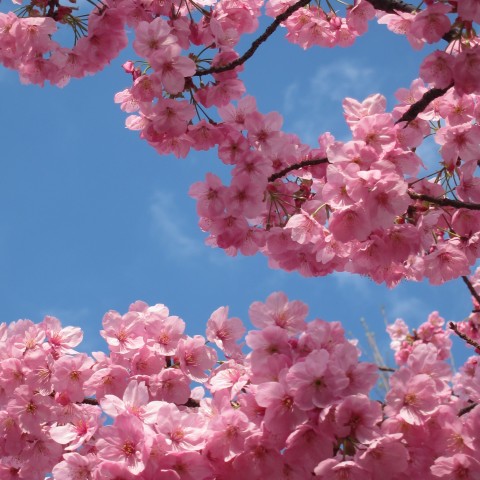
6. Working Holiday
Another easy option for working in Japan is the Working Holiday program. The Working Holiday program is based on bilateral arrangements between the governments and it aims to make it possible for young people of Japan and its partner countries/regions to enter each country for the purpose of spending holidays while allowing them to work. The program promotes opportunities for the youth to appreciate the culture and life of the country, as well as further understanding, by offering the right to work in that country.
Japan has a partnership with the following countries/regions:
- Australia
- New Zealand
- Canada
- The Republic of Korea
- The United Kingdom
- Ireland
- Denmark
- Norway
- Portugal
- France
- Germany
- Poland
- Slovakia
- Hungary
- Spain
- Argentina
- Chile
- Iceland or Czech
- Hong Kong
- Taiwan
The eligible age for application depends on the country, but it’s usually from 18 to 25 or 30 years old. The maximum length of stay is one year. In order to apply for the Working Holiday visa, please contact Embassies or Consulates-General of Japan in the respective country/region or Interchange Association (Taipei Office or Kaohsiung Office).
With the Working Holiday visa, you’re able to work part-time but note that certain jobs aren’t allowed under this visa such as working at bars, cabarets, nightclubs, gambling establishments, and other premises affecting public morals in Japan.
Conclusion: How Japanesepod101 Can Help You Learn More Japanese
We hope you enjoyed learning about finding a job in Japan with JapanesePod101! So, is it easy to find a job in Japan? Yes and no. Jobs in Japan for foreigners can be difficult to come by, and when it comes to jobs in Japan, employment opportunities don’t just leap out at you. But once you know a little more about the job industry here, it becomes much easier and more straightforward.
If you would like to learn more about the Japanese language, you’ll find a lot of useful content on JapanesePod101. We provide a variety of free lessons for you to improve your Japanese language skills.
If you’re a beginner learner of Japanese, you’ll find the following useful:
- Basic Japanese
- Daily Japanese Conversations
- 100 Japanese Words for Beginners
- Introduction to Japanese Pronunciation
- Learn to Read and Write Japanese
If you’re at the intermediate level, we recommend:
You’ll enjoy learning the Japanese language by watching videos and listening to actual Japanese pronunciation.
Happy Japanese learning with JapanesePod101!






